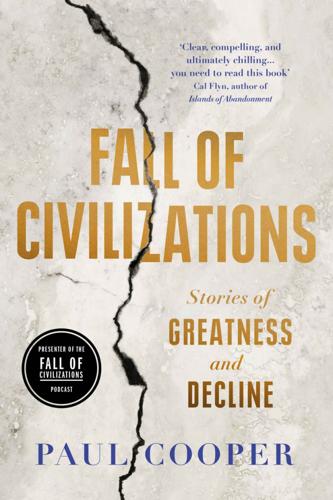
Fall of Civilizations: Stories of Greatness and Decline
by
Paul Cooper
Published 31 Mar 2024
This was done, and the body was left until the morning of the next day … He died with great fortitude, and without shewing any feeling.43 ‘Without delay, he had my uncle Atahuallpa brought out of prison into the open,’ remembers the Inca Titu Cusi, ‘and, without any resistance, garrotted him on a pole in the middle of the square.’44 The Spanish never made any attempt to fortify the city against an attack or prepare for battle against the massive army that was supposedly heading their way — suggesting that they had never really believed the threat. They dug a grave for Atahualpa, the last true emperor of the Inca, and left him to the worms. * * * After the death of Atahualpa, the Spanish installed the first of many puppet emperors, one of Atahualpa’s brothers named Túpac Huallpa — but he died of imported diseases in only a matter of months.
…
A seventeenth-century illustration of the Sapa Inca Atahualpa. It wasn’t long before Atahualpa defied his brother Huáscar’s claim to the throne and declared himself ruler of the north. For two years, both brothers eyed each other suspiciously across their borders — but in 1529, war broke out, and Atahualpa marched south to seize the entire empire for himself. The civil war that followed lasted for three years. During this time, Spanish sources portray Atahualpa as ruthless in the prosecution of his campaign. Juan de Betanzos, who was married to an Inca princess, wrote that Atahualpa buried some rebel chiefs alive, while with others ‘he ordered that their hearts be pulled out while they were alive.
…
He said he wanted to see the colour of the hearts of evil men.’16 In 1532, Atahualpa forced his brother back to his final stronghold of Cusco, before finally defeating him. He imprisoned Huáscar, and purged any members of the royal court who may have had stronger claims to the throne than his own. His victory was total. Atahualpa was now well on his way to becoming the thirteenth Sapa Inca, the next in a line of kings that stretched back a hundred years to the reign of Pachacuti. His land may have lain in ruins, his people may have been ravaged by disease and war, but the entire world now seemed to bow down before him. * * * Playing opposite Atahualpa in this drama is a man named Francisco Pizarro.
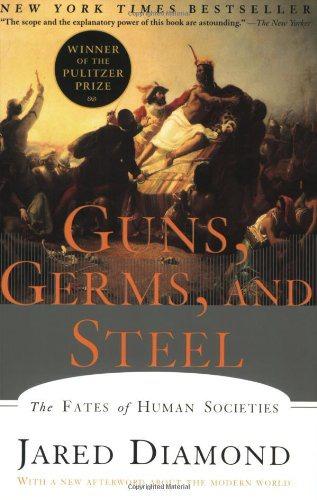
Guns, germs, and steel: the fates of human societies
by
Jared M. Diamond
Published 15 Jul 2005
Our Lord permitted that your pride should be brought low and that no Indian should be able to offend a Christian.' ” L E T US NOW trace the chain of causation in this extraordinary confron- tation, beginning with the immediate events. When Pizarro and Atahuallpa met at Cajamarca, why did Pizarro capture Atahuallpa and kill so many of his followers, instead of Atahuallpa's vastly more numerous forces cap- turing and killing Pizarro? After all, Pizarro had only 62 soldiers mounted on horses, along with 106 foot soldiers, while Atahuallpa commanded an army of about 80,000. As for the antecedents of those events, how did Atahuallpa come to be at Cajamarca at all? How did Pizarro come to be there to capture him, instead of Atahuallpa's coming to Spain to capture King Charles I? Why did Atahuallpa walk into what seems to us, with the gift of hindsight, to have been such a transparent trap?
…
"The Governor himself took his sword and dagger, entered the thick of the Indians with the Spaniards who were with him, and with great bravery reached Atahuallpa's litter. He fearlessly grabbed Atahuallpa's left arm and shouted 'Santiago!,' but he could not pull Atahuallpa out of his litter because it was held up high. Although we killed the Indians who held the litter, others at once took their places and held it aloft, and in this manner we spent a long time in overcoming and killing Indians. Finally seven or eight Spaniards on horseback spurred on their horses, rushed upon the litter from one side, and with great effort they heaved it over on its side. In that way Atahuallpa was captured, and the Governor took Atahuallpa to his lodging.
…
When fighting between Spaniards and Incas finally did commence after Atahuallpa's exe- cution, the Spanish forces were more formidable. Thus, Atahuallpa's capture interests us specifically as marking the deci- sive moment in the greatest collision of modern history. But it is also of more general interest, because the factors that resulted in Pizarro's seizing Atahuallpa were essentially the same ones that determined the outcome of many similar collisions between colonizers and native peoples elsewhere in the modern world. Hence Atahuallpa's capture offers us a broad win- dow onto world history. WHAT UNFOLDED THAT day at Cajamarca is well known, because it was recorded in writing by many of the Spanish participants.
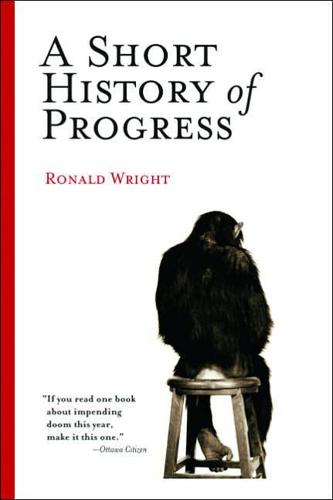
A Short History of Progress
by
Ronald Wright
Published 2 Jan 2004
“Europeans did not find a wilderness here,” the American historian Francis Jennings has written, “they made one.”17 For the Spanish, disease was a better weapon than a neutron bomb because just enough Amerindians survived to work the mines.18 The Aztec and Inca treasures were only a down payment on all the gold and silver that would flow across the Atlantic for centuries.19 Karl Marx was among the first economists to see that, financially, the Industrial Revolution begins with Atahuallpa’s gold. “An indispensable condition for the establishment of manufacturing industry,” he said in 1847, “was the accumulation of capital facilitated by the discovery of America and the importation of its precious metals.”20 The Genoese and German bankers who underwrote Spain’s empire were awash in bullion looking for something to do.
…
For example, Jared Diamond’s Guns, Germs, and Steel: The Fates of Human Societies (New York: W. W. Norton, 1997), which is informative on germs but should not be relied on for archaeological and historical data or interpretation. In particular, the dating and description of New World agriculture is flawed, and his portrayal of Atahuallpa’s overthrow and the other Spanish conquests omits important data and strikes me as tendentious. 29. Quinoa is a non-cereal grain of the Chenopodium, or goosefoot, family. New findings from Mexico report domesticated maize by 6,250 years ago (see Science, November 14, 2003). High-productivity maize with big cobs was developed about 2,000 years later, when its importance in the diet grew rapidly, and it spread from Mesoamerica to South America.
…
It is just possible that pre-Inca Peruvians reached the Marquesas, which may have been the migration “hub” for Easter Island, Hawaii, and other island groups. I think it equally possible that Polynesian canoes occasionally reached the South American coast and returned to their home islands. Spanish chroniclers recorded accounts of a fifteenthcentury expedition by Tupa Inca Yupanqui (Atahuallpa’s grandfather) to inhabited islands two months’ sailing from Peru — see Thor Heyerdahl, Sea Routes to Polynesia (London: Allen and Unwin, 1968), chap. 4 and 5, for a review of this evidence and its influence on early Spanish explorations. It seems unlikely that an Inca ruler would personally sail away from his empire for a year, but he may have commissioned such an expedition. 10. 166 square kilometres. 11.

Wired for War: The Robotics Revolution and Conflict in the 21st Century
by
P. W. Singer
Published 1 Jan 2010
Many troops in the field agree. Army staff sergeant Scott Smith says that “without even having to fire the weapons . . . it’s total shock and awe.” FIRST CONTACT In 1532, Atahuallpa was emperor of the Tawantinsuyu, better known to us as the Incan empire. Located in what is now Peru, Atahuallpa’s domain was the largest and richest of the empires in lands not yet reached by European explorers. Life was just getting good for Atahuallpa. He had beaten his brother in a civil war for the throne and was on his way back to his capital. Only a quick detour was needed to check out a tiny band of strange visitors that had just entered his lands.
…
A proud and cruel king (he had just forced his defeated brother to watch his children be hacked to death), and at the head of a battle-hardened army of eighty-thousand warriors, Atahuallpa believed he had little to fear. Atahuallpa and his army soon reached the encampment of the visitors, who invited the emperor to a peace ceremony. Carried in on a litter borne by the highest nobles of his court, and accompanied by a personal guard of four-thousand men, Atahuallpa entered the small courtyard where the visitors were camped. A delegation greeted him. One of the visitors, a man wearing brown robes, offered him a gift and told him, through a translator, that this “book” supposedly carried the word of God.
…
Most terrifying, though, were the strange creatures that also charged out, which had four legs like a beast, but the upper body of a human warrior. There were only 168 of these new visitors, but as they charged at the emperor and his 4,000 men, the effect was paralyzing. Atahuallpa’s guard was quickly chased away or slaughtered. The highest nobility of his kingdom were killed at his feet. When none were left to hold up his litter, the emperor was captured. Seventy-six thousand of Atahuallpa’s warriors were waiting in the fields just outside the town, and milled about, wondering what to do when they heard the strange noises and then saw their noblemen running for their lives. Twenty-seven of the man-beasts then emerged from the square and put the entire army to flight.
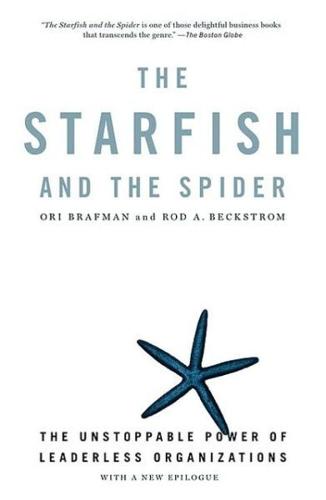
The Starfish and the Spider: The Unstoppable Power of Leaderless Organizations
by
Ori Brafman
and
Rod A. Beckstrom
Published 4 Oct 2006
By 1521, just two years after Cortes first laid eyes on Tenochtitlan, the entire Aztec empire—a civilization that traced its roots to centuries before the time of Christ—had collapsed. The Aztecs weren't alone. A similar fate befell the Incas. The Spanish army, led by Francisco Pizarro, captured the Inca leader Atahuallpa in 1532. A year later, with all the Inca gold in hand, the Spanish executed Atahuallpa and appointed a puppet ruler. Again, the annihilation of an entire society took only two years. These monumental events eventually gave the Spanish control of the continent. By the 1680s, the Spanish forces seemed unstoppable. With the winds of victory at their backs, they headed north and encountered the Apaches.
…
INDEX A abolitionist movement, English, 8587, 94, 95, 96-99, 100-101, 102, 103, 206 accordion principle, 42 accountability, 46, 165, 190, 195-96 active listening, 120, 124-25 Afghanistan, 147, 206 Alcoholics Anonymous (AA), 36-37, 40-41, 46, 47, 48, 49, 126, 140, 194 catalyst of, 92 centralizing influence on, 152-53 circles of, 88, 89, 90, 97 culture of trust in, 90-91 ideology of, 95, 96, 152, 206 leadership by example in, 37 mutation of, 50 preexisting platform for, 97 Alcoholics Anonymous World Services, Inc., 152—53 al Qaeda, 6, 140-43, 194, 205 circles of, 140-41 ideology of, 140 in Kenya, 140-41, 146, 155 strategically decentralized counterattacks on, 155—57 U.S. response to, 141—43 AlvarezRodriguez, Deborah, 112-15, 11920, 125-26, 128-29, 130-31 Amazon, 165-66, 174 user reviews on, 167—69, 170, 204-5 INDEX Andrews, Julie, 93 Animal Liberation Front (ALF), 135-40, 194 catalysts of, 135-37, 138 circles of, 137, 13839 civil disobedience by, 136, 137-38 FBI pursuit of, 138, 139, 143 ideology of, 139, 140,206 labs' response to, 139-40, 143 Anthony, Susan B., 103-5 Apaches, 15-21, 23, 55 cattle as centralizing influence on, 151-52 circles of, 88, 89, 92 decisionmaking of, 20—21, 46 ideology of, 95, 96, 149 leadership by example among, 20,37,71,92 mutation of, 21, 40 Nant'ans as leaders of, 20, 21, 22,24,35,37,46,47,71,91, 92, 99, 15152, 205 Apache server software, 69— 72, 90, 91,92,94-95, 172, 194,205 Apple, 192-93 iTunesof, 193, 194-95 appreciative inquiry, concept of, 177-78 Atahuallpa, 17 AT&T, 61, 62, 63, 201 auction industry, online, 161—67 sweet spot of, 189-91 auto industry, 181-89, 191 Aztecs, 16-17, 18, 19, 22, 35, 152 B backpage.com, 68 Behlendorf, Brian, 70, 92 Big Book, The (Alcoholics Anonymous), 152—53 bin Laden, Osama, 6, 140, 142 brain, distributed structure of, 3—5 Brennan, William, 11 Buckmaster, Jim, 64, 67 Burning Man festival, 77-81, 90, 154 creativity at, 78-79, 80-81 gift economy of, 79, 90, 204 selfpolicing of, 79-80 Bury the Chains (Hochschild), 85 catalysts, 40-41, 91-94, 97-101, 109-31, 135-37, 138, 140, 143, 144, 154, 170, 183-84, 205-6, 207 active listening by, 120, 124-25 in Afghanistan, 147 ambiguity tolerance of, 127—28, 129, 131 CEOs vs., 129-31 champions linked to, 98—101, 102-5, 119-20 charisma of, 99 creativity promoted by, 128, 131 desire to help in, 118, 123 emotional intelligence of, 125-26, 129 as genuinely interested in others, 120-21 hands-off approach of, 128 as inspiration to others, 126-27, 129, 206 mapping by, 116, 12223, 206 multiple casual relationships of, 115-18, 121-22 passion of, 118, 119, 124 productive situations for, 129-31 stepping aside by, 37, 41, 92, 93, 94,112, 114, 117, 128-29,206 traditional leaders vs., 93 trust in relationships of, 126, 129, 163 centralization, strategic, 151—54, 156 INDEX centralized (spider) organizations, 16-22,31-53,60,61,71-72, 141-42, 201 accountability of, 46 central funding of, 51—52 CEOs of, 46, 129-31 as coercive, 19, 21, 41 concentrated knowledge and power in, 49 consolidation of, 63, 68, 139-40, 142, 192 countable membership of, 50-51 division of roles in, 48 headquarters of, 19, 22, 38-39, 46-47 hierarchy of, 22, 46 increased centralization after attacks on, 139-40, 141-42 indirect communication in, 52-53 interdependent units of, 48—49 leadership of, 19, 22, 46, 47, 97 as poor platforms, 97 property rights in, 151—54 removal of head as fatal to, 47, 138, 142-43 rigidity of, 50 starfish as mistaken for, 31—36, 45-46 see also hybrid organizations champions, 90-101, 102-5, 119-20 Chinook diplomacy, 147—49 CIO Symposium, 115-16 Clarkson, Thomas, 98-99, 100-101, 102, 104 Concept of the Corporation (Drucker), 183 Constitution, U.S., 142 Cook, Scott, 91, 170-71 Cooperrider, David, 177—78 Cortes, Hernando, 16-17, 19, 32 craigslist, 64-69, 76, 94, 96, 98, 162, 190, 195, 202, 208 culture of trust on, 65—67, 68, 91 profits of, 64, 65, 69 "scraping" of, 68-69 as usercontrolled system, 65-67, 68, 92, 126 virtual circles of, 88-89 Creation of the Media, The (Starr), 199-200 decentralization, strategic, 155—58 see also hybrid organizations D decentralized (starfish) organizations: anonymity and, 194 autonomous units of, 48—49, 51 catalysts of, see catalysts circles of, 87, 88-91, 93-94, 97, 101, 114, 118, 127, 129, 131, 137, 138-39, 140-41, 143, 145, 157, 169, 186, 207 creativity of, 78-79, 80-81, 97, 128, 131, 191,203 culture of trust in, 65—67, 68, 90-91, 111, 113-14, 163, 165, 168, 190 direct communication in, 52-53, 65-66 diseconomies of scale in, 201-2 distributed knowledge and power of, 21,49-50, 97, 163-64 distributed policing of, 76-77, 80 distributed structure of, 20 division of roles lacked by, 48 easy mutation of, 21, 37, 40—41, 50 flexibility of, 21,22, 40, 50 and free information flow, 194 INDEX decentralized (starfish) organizations (cont.) headquarters lacked by, 19, 46-47 hierarchy lacked by, 19, 46 identifying questions to ask about, 45—53 ideology of, see ideology intelligence spread throughout system in, 39—40 knowledge at the edge in, 40, 177-78, 204 leadership in, 1920, 37, 39, 67, 71,91,94 managing, measuring, and monitoring of, 207 as mistaken for spiders, 31—36, 45-46 network effect in, 166-67, 202-3 as open systems, 20, 21, 37, 39-41, 67, 72,94-95 overall profits decreased in, 45, 94 people's desire to contribute to, 74-77, 79, 80, 91, 169, 170-72, 184, 204-5 power of chaos in, 203, 208 preexisting networks as platforms of, 96-98, 103, 105 principles of, 21, 24, 36, 39-40, 41,45,74, 139-40 rapid growth of, 41—44 response to attacks on, 21—27, 139, 143, 156, 205 selfenforced norms of, 20, 90 selffunding units of, 51—52 strategic responses to attacks by, 143-58, 206, 207-8 uncountable participants in, 50-51 variance created by, 191 Deep End of the Ocean, Tlie (Mitchard), 169-70 Diamond, Jared, 167—68 Dorman, David, 62-63 Draper, Tim, 176 Draper Fisher Jurvetson (DFJ), 176 Drucker, Peter, 18189, 191 E eBay, 162-67, 203, 208 accountability of, 165, 190, 195 culture of trust on, 163, 165, 190 headquarters of, 164 listing fees of, 166 network effect and, 166—67 PayPal of, 165, 195 reputation of, 164, 166 Skype purchased by, 63, 176 on sweet spot, 189—91 user ratings on, 163-64, 165, 166-67, 168, 170, 190, 195 eClass229, 161-62, 164, 165, 166 economies of scale, 192 diseconomies of scale vs., 201—2 Edison, Thomas, 42 eDonkey, 24-25, 26, 154 eMule, 25, 27, 40, 42, 44, 46, 47, 60,91,98, 154, 173, 192, 193, 194-95, 196, 202, 203, 205 catalyst of, 92-93 ideology of, 95-96 Fanning, Shawn, 5-6, 13—14, 43, 162 Federal Bureau of Investigation (FBI), 138, 139, 143 federal decentralization, 142, 183 Florida Keys, 1935 hurricane in, F 37-39, 49, 52, 155,204 France, 200 INDEX internal decentralization of, 174-78 of online auction industry, 161-67 of software industry, 170—74 see also sweet spot Hydra response, 205 Internet president demanded by investors of, 31-34, 35, 45, 46, 69, 142, 162, 201 Future Generations, 147, 206 G Garrison, Dave, 31-34, 69, 142, 162, 201 General Electric (GE), 175, 208 General Motors (GM), 18189 assembly lines of, 185, 186-89, 191, 201 as hybrid organization, 183—84, 188-89, 208 ideology of, 184 NUMMI plant of, 187-88 successful managerial structure of, 181-84 Toyota vs., 185-89, 191,201 Geronimo, 20 gift economy, 79, 90, 204 Goodwill Industries, 112, 114-15, 126, 130-31 Google, 17172, 174, 195-96 Gorog, Chris, 24 grandmother cell, theory of, 3-5 Grokster, 12-15, 22, 24, 26, 43 GungHo, 188 H N; Harvard University, 163—64, 166 Hemming, Nikki, 60 Hochschild, Adam, 85 Hoffman, Auren, 109-10, 115-18, 120-21, 122, 123, 129, 206 Hresko, Jamie, 188 hybrid organizations, 161-78, 181-96, 207-8 appreciative inquiry in, 177—78 customer experience decentralized by, 161-74 I IBM, 72, 171, 184 open-source software supported by, 172-74 ideology, 94-96, 102-5, 113, 114, 118, 124, 129,207 of AA, 95, 96, 152,206 of ALF, 139, 140.206 of al Qaeda, 140 of Apaches, 95, 96, 149 backlash against attempted influencing of, 149—51 of eMule, 95-96 of GM, 184 of P2P downloaders, 149-51 strategic alteration of, 144—51, 156, 206 Incas, 17, 18, 19 Internet: browsers for, 69—72 as decentralized platform, 97—98 estimated user numbers of, 12, 51 flexibility of, 50 French investors' demand for president of, 31-34, 35, 45, 46,69, 142, 162,201 survival ability of, 48-49 virtual circles on, 88-89, 91 Intuit, 91, 170-71, 174, 184, 204 iTunes, 193, 194-95 J Jacobi, Leor, 99-100 Jamii Bora Trust, 144-46, 149, 206 Japan, 184-89 Joachim, Joseph, 42-43, 44-45 Kashmir, relief efforts in, 148—49 Katrina, Hurricane, 39 Kazaa, 22-25, 26, 41, 60, 61, 154, 205 Kazaa Lite (K+), 24, 41 Kendall, David, 12 Kenya, 143 al Qaeda in, 140-41, 146, 155 Jamii Bora Trust in, 144-46, 149, 206 Labor Day hurricane of 1935, 37-39,49,52, 155,204 Lao-tzu, 114-15 Lettvin, Jerry, 5 Linckia, 35 Linux, 72, 172-73 Lockley, Walt, 75 McNealy, Scott, 173, 174 Martin, David, 119-20, 126, 206 Mary Poppins, 93 Mendelssohn, Felix, 42 MGM, 11-15, 16, 23, 24, 26, 27, 34, 45, 46, 201 Microsoft, 65, 71-72, 94, 172 Mitchard, Jacquelyn, 169-70 Montezuma II, 16-17, 20, 22, 23 Moody, Glyn, 70-71 movie industry, 149-51 Munro, Ingrid, 145 music industry, 41-45, 60 economies of scale in, 192 performing musicians in, 42—43, 44-45, 19192 progression of, 42—45 sweet spot in, 191-95 see also record industry music piracy, 5—6, 17, 22—27', 192-94 lawsuits against, 11—15, 22, 23-24,26,60, 194 revenues lost by, 13, 25, 26, 45, 192 see also P2P (peer-topeer) services Nant'ans, Apache, 20, 21, 22, 24,35,37,46,47,71, 91,92,99, 151-52, 205 Napster, 6, 13-14, 22, 24, 26, 41, 43,45, 154, 162, 192, 194, 205 Napster II, 24, 26 Nature, 74 Navajos, 151 NCSA Project, 69-72 Netcom, 31-34 Netscape, 69, 71-72, 162 network effect, 166-67, 202-3 Nevins, Tom, 15-21, 34, 35, 37, 110, 151,152 Newkirk, Ingrid, 138-39 Newmark, Craig, 6, 64-69, 92, 94, 202 newspaper industry, 68 New Times Corporation, 68 New United Motors Manufacturing, Inc.
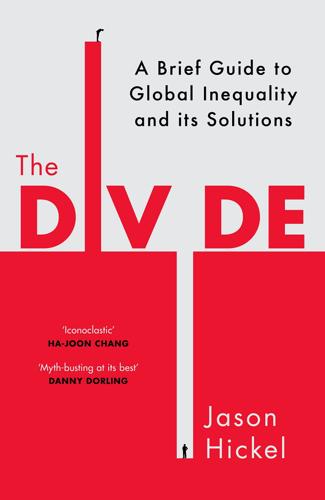
The Divide: A Brief Guide to Global Inequality and Its Solutions
by
Jason Hickel
Published 3 May 2017
By 1521, Montezuma had been killed and the capital plundered of its treasures. Francisco Pizarro, yet another Spanish conquistador, followed suit. In 1532 he was invited into the Inca capital in Peru by Emperor Atahuallpa, who – protected by an army of 80,000 men – did not consider Pizarro and his soldiers to be a threat. Yet Pizarro, enabled by his weapons, managed to sack the city and capture Atahuallpa. To spare his life, the emperor offered to fill a large room with gold and then to fill it twice again with silver, within two months, for he knew how much the Spanish loved precious metals. As a Nahuatl text from the time put it: ‘They lifted up the gold as if they were monkeys, with expressions of joy, as if it put new life into them and lit their hearts.9 As if it were certainly something for which they yearn with great thirst.
…
As a Nahuatl text from the time put it: ‘They lifted up the gold as if they were monkeys, with expressions of joy, as if it put new life into them and lit their hearts.9 As if it were certainly something for which they yearn with great thirst. Their bodies fatten on it and they hunger violently for it. They crave gold like hungry swine.’ Pizarro agreed to the emperor’s offer and Atahuallpa proceeded to pile the precious metals high. But it was a trick. Having received the gold and silver, Pizarro executed Atahuallpa after sentencing him in a mock court for the ‘crime’ of resisting the Spanish invasion. A few decades later, Europeans discovered the immense network of silver mines centred on Potosi, in what is now Bolivia. Before long the metal came to account for 99 per cent of the mineral exports from the Spanish colonies.10 Between 1503 and 1660, 16 million kilograms of silver was shipped to Europe, amounting to three times the total European reserves of the metal.

The Rough Guide to Peru
by
Rough Guides
Published 27 Apr 2024
The ticket can be bought at either the El Cuarto del Rescate or the complex. Atahualpa’s last days Atahualpa, the last Inca lord, was in Cajamarca in late 1532, relaxing at the hot springs, when news came of Pizarro dragging his 62 horsemen and 106 foot soldiers high up into the mountains. Atahualpa’s spies and runners kept him informed of their movements, and he could easily have destroyed the small band of weary aliens in one of the rocky passes to the west of Cajamarca. Instead he waited patiently until Friday, November 15, when a dishevelled group entered the streets of the deserted Inca city. For the first time, Pizarro saw Atahualpa’s camp, with its sea of cotton tents, and an army of men and long spears.
…
Not one Inca raised a weapon against the Spanish. Atahualpa, apparently an experienced warrior-leader, had badly underestimated his opponents’ crazy ambitions and technological superiority – steel swords, muskets, cannons and horsepower. Atahualpa's ransom Taken prisoner by the Conquistadors after the deaths of 7000 or so of his followers and aware of the Spanish lust for gold, Atahualpa offered to buy his freedom by filling a large chamber with the precious metal, and it took a year for this ransom to be gathered, with priceless objects melted down and turned into bullion. Atahualpa had good reason to fear his captors’ treachery, and sent messages to his followers in Quito to come and free him.
…
Huascar (1525–32) Huascar was appointed Inca Emperor, but there were many other pretenders, including Atahualpa, who defeated him in battle just before Pizarro landed. Atahualpa (1532–33) The shortest reign of any Inca was terminated by the Conquistadors in Cajamarca. Almost as a natural progression from over-extending the empire in this way, divisions in Inca society came to a head even before Huayna Capac’s death. Ruling the empire from Quito, along with his favourite son Atahualpa, Huayna Capac installed another son, Huascar, at Cusco. In the last year of his life he tried to formalize the division – ensuring an inheritance at Quito for Atahualpa – but this was fiercely resisted by Huascar, legitimate heir to the title of Inca Emperor and the whole empire, as well as by many of the influential Cusco priests and nobles.

Lonely Planet Peru
by
Lonely Planet
Shortly before the arrival of the Europeans, Huayna Cápac had divided his empire, giving the northern part to Atahualpa and the southern Cuzco area to another son, Huascar. The brothers fought bitterly for the kingdom. As a pure-blooded native cuzqueño (inhabitant of Cuzco), Huascar had the people’s support, but Atahualpa had the backing of the battle-hardened northern army. In early 1532 Atahualpa won a key battle, capturing Huascar outside Cuzco. Meanwhile, Francisco Pizarro landed in northern Peru and marched southward. Atahualpa himself had been too busy fighting the civil war to worry about a small band of foreigners, but by 1532 a fateful meeting had been arranged with the Spaniard in Cajamarca.
…
At today’s prices, this ransom would be worth almost S180 million, but the artistic value of the ornaments and implements that were melted down to create the bullion is impossible to estimate. Atahualpa, suspecting he was still not going to be released, sent desperate messages to his followers in Quito to come to Cajamarca and rescue him. The Spaniards, panic-stricken by these messages, sentenced Atahualpa to death. On July 26, 1533, Atahualpa was led out to the center of the Cajamarca plaza to be burned at the stake. At the last hour, Atahualpa ‘accepted’ baptism and, as a reward, his sentence was changed to a quicker death by strangulation. Most of the great stone Inca buildings in Cajamarca were torn down and the stones used in the construction of Spanish homes and churches.
…
El Cuarto del RescateRUINS (map Google map; Ransom Chamber; Puga; S5; h9am-1pm & 3-8pm Tue & Wed, 9am-8pm Thu-Sat, 9am-1pm Sun) The Ransom Chamber, the only Inca building still standing in Cajamarca, is where Inca ruler Atahualpa was imprisoned. The small room has three trapezoidal doorways and a few similarly shaped niches in the inner walls – signature Inca construction. Visitors are not permitted to enter the room, but from outside it’s possible to observe the red line marking the original ceiling of the structure – the point to which it was to be filled with treasure to secure Atahualpa’s release. At the entrance to the site are a couple of modern paintings depicting Atahualpa’s capture and imprisonment. The stone of the building is weathered as it has only recently been covered by a large protective dome.

The Ascent of Money: A Financial History of the World
by
Niall Ferguson
Published 13 Nov 2007
It took the would-be conquerors just under two years to achieve their objective: a confrontation with Atahuallpa, one of the two feuding sons of the recently deceased Incan emperor Huayna Capac. Having declined Friar Vincente Valverd’s proposal that he submit to Christian rule, contemptuously throwing his Bible to the ground, Atahuallpa could only watch as the Spaniards, relying mainly on the terror inspired by their horses (animals unknown to the Incas), annihilated his army. Given how outnumbered they were, it was a truly astonishing coup.6 Atahuallpa soon came to understand what Pizarro was after, and sought to buy his freedom by offering to fill the room where he was being held with gold (once) and silver (twice).
…
advertising 196 Afghanistan 6 Africa: aid to 307 British investment in 293 China and 338-9 gold trade 25 slaves from 23 African-American people 249-50 ‘Africas within’ 13 age see pensions agriculture: East-West comparison 285 finance and 2 forward and future contracts 226 ‘improvements’ 235 and migration 110 rising and declining prices 53 and risk 184 Agtmael, Antoine van 288 Aguilera, Jaime Roldós 310-11 aid: conditions on 307 limited usefulness 307 and microfinance 279 to developing countries 274 Aldrich-Vreeland Act 301 Algeria 32 Allende, Salvador 212-13 Allison, Graham 223 All State insurance company 181-2 Al Qaeda 223 Alsace 144 Amboyna 130 American Civil War 91-7 American Dream Downpayment Act 267 American Home Mortgage 272 Americas, conquest of 285 Amsterdam 127 as financial centre 74-5 Amsterdam Exchange Bank (Wisselbank) 48-9 anarchists 17 Andersen (Arthur) 173 Andhra Pradesh 280 Angell, Norman 297 Angola 2 annuities 73-4 anthrax 223 anti-Darwinians 356 Antipodes 293 anti-Semitism 38 Antwerp 52 Applegarth, Adam 7 Arab: mathematics 32 oil 26 Arab-Israeli war 308 arbitrage 83 Argentina 98 British investment in 294 currencies 114 default crisis 110 Enron and 171 inflation 3 past prosperity 3 stock market 125 aristocracy 89 ARMs see mortgages, adjustable-rate arms/defence industry 298 . see also technological innovation art markets 6 Asia: aid and international investment 287 Asian crisis (1997-8) 10 and credit crunch 283 dependence on exports to US 10 dollar pegs 300 European trade 26 industrial growth and commodity prices 10 low-wage economies, production by 116 savings glut 336 sovereign wealth funds 9 asset-backed securities 6 and sub-prime mortgages 9 assets: asset markets 163 need for diversified portfolio 262 new types 353 asymmetric information 122 Atahuallpa 20 Australasia 52 Australia 233 Austria/Austro-Hungarian empire 90 bonds 86 currency collapses 107 and First World War 101 autarky 303 automobiles 160 Avignon 43 Babylonia see Mesopotamia Baer (Julius) bank 322 Bagehot, Walter 55 Baghdad 176 Bahamas see Lyford Cay Bailey, A. H. 198 Bailey, David 196n.
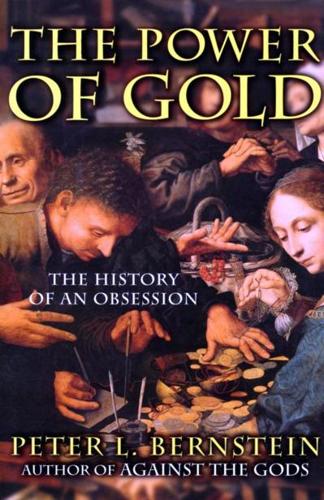
The Power of Gold: The History of an Obsession
by
Peter L. Bernstein
Published 1 Jan 2000
23 The Inca's royal procession appeared a few hours later but halted about half a mile from Caxamalca and began to pitch their tents. Pizarro sent a messenger to ask Atahualpa to join the Spaniards as soon as possible, as both dinner and entertainment had been provided for him. Atahualpa swallowed the bait-whole. He arrived with only a few warriors, and without arms. Was Atahualpa so absolute in his own empire that he had no fear of entrapment? Or did he simply figure that a small troop of only two hundred men would never even contemplate such a brazen deed? Whichever it was, his lighthearted decision would seal his doom. Atahualpa may not have brought his army with him, but he did not spare the numbers of the rest of his retinue; five thousand or six thousand people filled the square in Caxamalca.
…
"In this respect," Prescott comments, "the most common soldier was attended by a retinue of menials that would have better suited the establishment of a noble."28 Shades of the fourteenthcentury Florentine chronicler in the previous chapter, who had complained "at the spectacle of the popolo minuto who ... dressed themselves in a manner unbefitting their station and insisted on the finest delicacies at their table."29 As the Spaniards settled down to await reinforcements from the Spanish base on the coast, Pizarro used the time to become better acquainted with his captive. Atahualpa, on his side, closely observed the Spaniards. He soon discovered that they had an appetite even more potent than their repeated efforts to convert him to Christianity: the love of gold. One day Atahualpa proposed a deal. If Pizarro would set him free, the Inca would arrange to have the room he occupied filled with gold as high as he could reach, all within two months; the gold would come from the royal palaces, temples, and public buildings. The area of the room was about 17 feet by 22 feet, with a height of nine feet. Pizarro eagerly accepted the proposition. As Atahualpa stood on tiptoe, a red line was drawn at the height he indicated, a notary recorded the details of the agreement, and Atahualpa dispatched couriers to execute the task.
…
The account of the Inca has a hideous ending. Newly arrived Spanish troops saw little point in continuing to shelter Atahualpa and were strongly opposed to liberating him. Pizarro resisted the pressure at first but ultimately yielded. He put the Inca up for trial under charges of having usurped the throne, squandering public revenues, practicing adultery and idolatry, and attempting to instigate an insurrection against the Spaniards. The kangaroo court lost little time in finding Atahualpa guilty. After the sentence was pronounced, Atahualpa turned with tears in his eyes to Pizarro and asked, "What have I done, or my children, that I should meet such a fate?
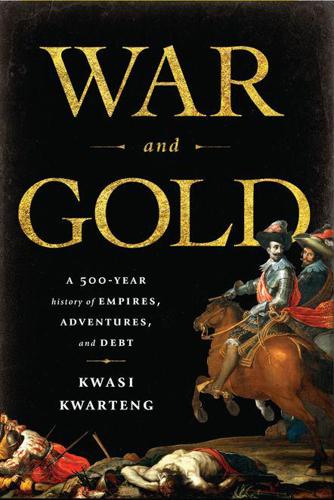
War and Gold: A Five-Hundred-Year History of Empires, Adventures, and Debt
by
Kwasi Kwarteng
Published 12 May 2014
It was the context of the civil war which allowed Pizarro and his small band to achieve their dramatic successes. The contest between Pizarro and Atahualpa, the encounter of two different cultures and mentalities, has fascinated historians and dramatists ever since. In The Royal Hunt of the Sun, the playwright Peter Shaffer portrays Atahualpa and Pizarro as representatives of two opposed civilizations. In Act II of the play, Atahualpa tells Pizarro, ‘You want gold. I know. Speak,’ to which Pizarro simply responds with the direct question, ‘You have gold?’ Atahualpa replies: ‘It is the sweat of the sun. It belongs to me.’18 The process by which Atahualpa fell into Pizarro’s hands seems almost miraculous.
…
Having invited him for talks at dinner in Cajamarca, a town situated in the Andes mountains at an altitude of 9,500 feet, they prepared an ambush in which 7,000 Incas were killed. Atahualpa himself was captured. It was at this point that the Inca leader offered his notorious ransom. Pizarro asked Atahualpa how much treasure he would give the Spanish to buy his liberty. Atahualpa, seemingly nonchalant, answered that he would give a room full of gold. The room measured 22 feet long by 17 feet wide and would be filled, according to the Inca leader, up to 8 feet high in various objects of gold – ‘jars, pots, tiles and other pieces’.20 Atahualpa also promised to give an even greater quantity of silver – the ‘tears of the moon’, as the Incas called it.
…
The last independent ruler of Peru, Huayna Capac, reigned over his empire from 1498 till 1527; he was inactive and ill, perhaps from syphilis. On his death, he left two sons, Huascar, a son by his first wife, and Atahualpa, a son by his second wife, a princess from a northern tribe conquered by the Inca. Huayna had apparently considered giving both of his sons a portion of the kingdom, with Atahualpa ruling the northern part and Huascar, the elder brother, the southern. On the old Emperor’s death, each of his sons, unwilling to compromise, wanted the entire inheritance for himself.17 There was launched a fierce civil war in which Atahualpa triumphed. It was the context of the civil war which allowed Pizarro and his small band to achieve their dramatic successes.
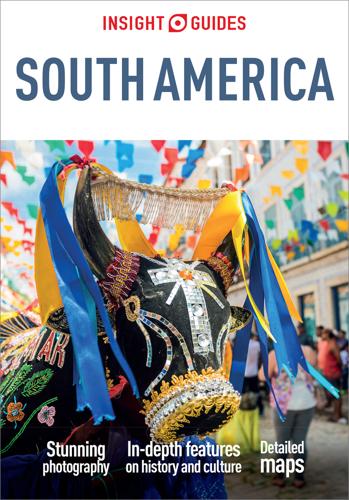
Insight Guides South America (Travel Guide eBook)
by
Insight Guides
Published 15 Dec 2022
His son, Huayna Capac, married the daughter of the local ruler to consolidate their kingdoms. Their son Atahualpa was to become Huayna Capac’s favorite, but Atahualpa’s half-brother Huascar, descended from Inca lineage on both sides, was the legitimate heir. In 1527, Huascar ascended the Cusco throne, dividing the empire for the first time between Quito and Cusco. Atahualpa won the ensuing five-year civil war, killing his brother and establishing the new capital of Cajamarca in northern Peru. But the war had severely weakened both the infrastructure and the will of the Incas. Execution of the last Incan Emperor, Atahualpa (1497 – 1533), by Spanish conquistador Francisco Pizzaro, on August 29, 1533.
…
The Spanish arrived in Cajamarca in 1532. At a prearranged meeting, Atahualpa and several thousand followers – many unarmed – entered the great square, where a Spanish priest called on them to embrace Christianity and accept the sovereignty of the Spanish king, Charles V. When Atahualpa refused, the Spaniards ambushed the Incas, hundreds of whom were killed. Pizarro took Atahualpa prisoner, demanding a room full of gold to pay his ransom. This was done, but the Inca was not freed. After nine months, the Spaniards accused Atahualpa of treason, and garrotted him. The Spaniards then marched on the Inca capital, Cusco, and used Inca bureaucracy and administrative divisions for their own ends.
…
Within a few generations however, a northerner, Atahualpa, had become Inca, only to be executed by the Spaniard Francisco Pizarro in 1532. While Pizarro plundered, his lieutenant Sebastián de Benalcázar battled northward to the city of Quito. Arriving in late 1534, he found the city in ruins: Rumiñahui, Atahualpa’s general, had destroyed and evacuated it rather than lose it intact to the Spaniards. Benalcázar refounded Quito on December 6, 1534. Rumiñahui was captured, tortured, and executed the following month. Before that however, Rumiñahui may have been able to entomb Atahualpa’s mummy in the western Andean foothills.

The Rise and Fall of the Third Chimpanzee
by
Jared Diamond
Published 2 Jan 1991
Any advanced extraterrestrials who discovered us would surely treat us in the same way. Think again of those astronomers who beamed radio signals into space from Arecibo, describing Earth's location and its inhabitants. In its suicidal folly that act rivalled the folly of the last Inca emperor, Atahuallpa, who described to his gold-crazy Spanish captors the wealth of his capital and provided them with guides for the journey. If there really are any radio civilizations within listening distance of us, then for heaven's sake let's turn off our own transmitters and try to escape detection, or we are doomed.
…
With futile Polish cavalry charges against Hitler's invading armies in September 1939, the military importance of this most universally prized of all domestic animals finally came to an end after 6,000 years. Ironically, relatives of the horses that Cortes and Pizarro rode had formerly been native to the New World. Had those horses survived, Montezuma and Atahuallpa might have shattered the conquistadores with cavalry charges of their own. But, in a cruel twist of fate, America's horses had become extinct long before that, along with eighty or ninety per cent of the other large animal species of the Americas and Australia. It happened around the time that the first human settlers—ancestors of modern Indians and native Australians—reached those continents.
…
Thus, if the Old and New Worlds had each been rotated ninety degrees about their axes, the spread of crops and domestic animals would have been slower in the Old World, faster in the New World. The rates of rise of civilization would have been correspondingly different. Who knows whether that difference would have sufficed to let Montezuma or Atahuallpa invade Europe, despite their lack of horses? I have argued, then, that continental differences in the rates of rise of civilization were not an accident caused by a few individual geniuses. They were not produced by the biological differences determining the outcome of competition among animal populations—for example, some populations being able to run faster or digest food more efficiently than others.
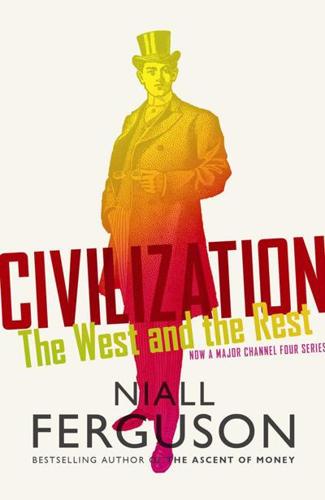
Civilization: The West and the Rest
by
Niall Ferguson
Published 28 Feb 2011
At the same time, the Spaniards’ horses, guns and crossbows were weapons far superior to anything in the Inca armoury; they gave the invaders a terrifying extra-terrestrial aspect. And the Incas themselves were divided. Since the death of the Inca Huayna Capac, his sons Atahualpa and Huascar had been battling for the succession, while subject tribes scented a chance to throw off the Inca yoke. The Battle of Cajamarca (14 November 1532) was thus scarcely a battle at all. As Pizarro’s brother Hernando described it, Atahualpa walked into a trap when he accepted the Spaniards’ invitation to dinner: When Atahualpa had advanced to the centre of an open space, he stopped, and a Dominican friar, who was with the Governor [Pizarro], came forward to tell him, on the part of the Governor, that he waited for him in his lodging, and that he was sent to speak with him.
…
As Pizarro’s brother Hernando described it, Atahualpa walked into a trap when he accepted the Spaniards’ invitation to dinner: When Atahualpa had advanced to the centre of an open space, he stopped, and a Dominican friar, who was with the Governor [Pizarro], came forward to tell him, on the part of the Governor, that he waited for him in his lodging, and that he was sent to speak with him. The friar then told Atahualpa that he was a priest, and that he was sent there to teach the things of the faith if they should desire to be Christians. He showed Atahualpa a book which he carried in his hands [the Bible], and told him that that book contained the things of God. Atahualpa asked for the book, and threw it on the ground, saying: ‘I will not leave this place until you have restored all that you have taken in my land. I know well who you are and what you have come for.’
…
One strong possibility is that epidemic disease arrived there from Hispaniola (the island which is today divided between the Dominican Republic and Haiti) ahead of the conquistadors, killing the population and leaving Machu Picchu a ghost town. The pretext for the initial Spanish assault at Cajamarca was that the Incas refused to convert to Christianity. But it was not God but gold that really interested Pizarro. The captured Atahualpa’s vain attempt to secure his freedom by filling his cell once with gold and twice with silver merely aroused the conquistadors’ appetite for precious metal. The 13,420 pounds of 22-carat gold and 26,000 pounds of pure silver that were duly piled up made every man in the expedition rich at a stroke.
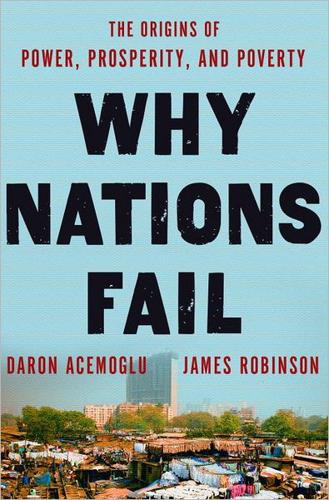
Why Nations Fail: The Origins of Power, Prosperity, and Poverty
by
Daron Acemoglu
and
James Robinson
Published 20 Mar 2012
On November 15, 1532, he reached the mountain town of Cajamarca, where the Inca emperor Atahualpa was encamped with his army. The next day, Atahualpa, who had just vanquished his brother Huáscar in a contest over who would succeed their deceased father, Huayna Capac, came with his retinue to where the Spanish were camped. Atahualpa was irritated because news of atrocities that the Spanish had already committed, such as violating a temple of the Sun God Inti, had reached him. What transpired next is well known. The Spanish laid a trap and sprang it. They killed Atahualpa’s guards and retainers, possibly as many as two thousand people, and captured the king.
…
They killed Atahualpa’s guards and retainers, possibly as many as two thousand people, and captured the king. To gain his freedom, Atahualpa had to promise to fill one room with gold and two more of the same size with silver. He did this, but the Spanish, reneging on their promises, strangled him in July 1533. That November, the Spanish captured the Inca capital of Cusco, where the Incan aristocracy received the same treatment as Atahualpa, being imprisoned until they produced gold and silver. When they did not satisfy Spanish demands, they were burned alive. The great artistic treasures of Cusco, such as the Temple of the Sun, had their gold stripped from them and melted down into ingots.
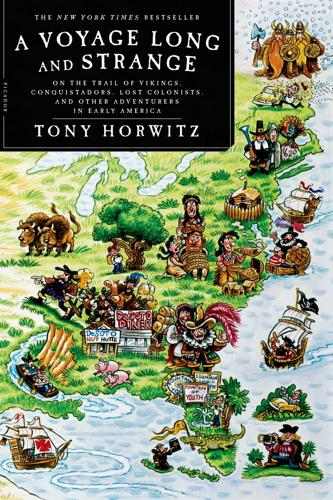
A Voyage Long and Strange: On the Trail of Vikings, Conquistadors, Lost Colonists, and Other Adventurers in Early America
by
Tony Horwitz
Published 1 Jan 2008
He was also a shrewd businessman, amassing a diversified portfolio of plundered gold, grants of Indian labor, and stakes in mining and shipping. De Soto sealed his fortune by joining in the conquest of Peru, where Pizarro dispatched him as an emissary to Atahualpa. With characteristic bravura, De Soto rode straight into the Incan camp and reared his foaming steed before the emperor. When the Spanish later garroted Atahualpa and looted Peru’s gold and silver, De Soto’s cut came to more than $10 million in today’s dollars. The hidalgo who had left Spain as a teenager returned home in his mid-thirties as one of the country’s wealthiest men.
…
LIKE MOST AMERICANS, I’d learned a little about Cortés in grade school, along with his most famous successor, Francisco Pizarro, the illiterate pig farmer who became conqueror of Peru. As a teenager, I listened to Neil Young wail “Cortez the Killer” and watched my loinclothed brother play a guard to the Inca emperor Atahualpa in The Royal Hunt of the Sun. But “conquistador” was a term I associated with Mexico and Peru. It wasn’t until I began my reeducation campaign that I realized how much of North America the Spanish had invaded, too. Their first incursion was also very early, preceding Cortés to Mexico by six years and the Pilgrims to America by more than a century.
…
His contract with the Crown gave him the right to choose over five hundred miles of coastline as his personal domain, to colonize and govern “for all the days of your life,” with a generous annual salary. But at Cofitachequi it became clear that De Soto had his eyes on a much greater prize. “Since the governor’s purpose was to seek another treasure like that of Atahualpa, the lord of Peru,” wrote one of his men, “he had no wish to content himself with good land or with pearls.” And so, after a stay of eleven days, the army turned its back on the sea and marched toward yet another land rumored to have “a great lord.” De Soto took along his looted pearls—and also the lady of Cofitachequi.

The Rough Guide to South America on a Budget (Travel Guide eBook)
by
Rough Guides
Published 1 Jan 2019
Machu Picchu and the Inca capital of Cusco are constructed. 1500–30 The Inca Empire stretches over 5500km, from southern Colombia right down to northern Chile. 1532 Francisco Pizarro leads his band of 170 Conquistadors from Tumbes to Cajamarca, capturing the Inca ruler Atahualpa and massacring thousands of Inca warriors. 1533 Atahualpa is executed and the Spaniards install a puppet Inca ruler, Manco Inca. 1535 Lima is founded by Pizarro as the “City of Kings”. 1538–41 Conquistadors fight for control of the colony. Diego de Almagro is executed by Pizarro, who in turn is assassinated by Almagro’s son. 1542 The Viceroyalty of Peru is established by Spain’s King Charles I, with Lima as its capital. 1571 Unsuccessful rebellion by the last Inca, Túpac Amaru, results in his execution. 1821 Argentine general José de San Martín declares Peruvian Independence on July 28. 1824 The last of the Spanish forces are defeated at the battles of Junín and Ayacucho.
…
Over the next two centuries, the Valle de Cusco was home to the Inca people, but it wasn’t until Pachacutec assumed power in 1438 that Cusco became the centre of an expanding empire. The new ruler designed the city in the shape of a puma, with its head incorporating some of its most important sites. Of all the Inca rulers, only Atahualpa, the last, never actually resided in Cusco, and even he was en route there when the Conquistadors captured him at Cajamarca. Francisco Pizarro reached the native capital on November 15, 1533, after holding Atahualpa to ransom, then killing him anyway. The city’s beauty surpassed anything the Spaniards had seen before in the New World; the stonework was better than any in Spain and precious metals were used in a sacred context throughout the city.
…
Next to the church, pay S/1 (daily 7am–6.30pm) to go right to the top through pretty gardens, and see the rock formation known as the Silla del Inca (Inca chair), reputed to be a place where the Inca ruler would sit and gaze out over his empire. El Cuarto del Rescate (Atahualpa’s Ransom Room) One joint ticket (S/5, available from all sites) gives you entrance to several sights. The most famous is the only surviving Inca structure in Cajamarca – a modest stone room known as El Cuarto del Rescate (the ransom room), at Jr Amalia Puga 722 (Tues–Sat 9am–1pm & 3–8pm, Sun 9am–1pm). Legend has it that it was this very room that Atahualpa offered to fill with gold for the Conquistadors in order to save his life, although in reality it is probably just the room in which he was held prisoner.
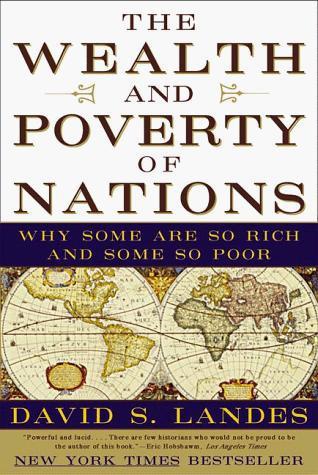
The Wealth and Poverty of Nations: Why Some Are So Rich and Some So Poor
by
David S. Landes
Published 14 Sep 1999
The Incas took this as a sign of fear, and indeed, many of the Spaniards were literally peeing in their pants. The Inca party of thousands marched in, brilliantly clad but unarmed. They filled the square, the greatest nobles in the kingdom bearing Inca Atahualpa on his royal litter. Now a Spanish priest advanced to offer the Inca a holy bible. Atahualpa opened it, looked, and threw it on the ground. That did it. The friar ran back to Pizarro: “Come out! Come out, Christians! Come at these enemy dogs who reject the things of God.” The slaughter that followed left some seven thousand Indians dead on the spot, plus numerous wounded.
…
By the time Sir Walter took things in hand, a cargo estimated at half a million pounds—nearly half of all the monies in the Exchequer—had been reduced to 140,000. Even so, it took ten freighters to carry the treasure around the coast and up the Thames to London. Next to the ransom of Atahualpa, it was perhaps the greatest haul in history. And like the ransom of Atahualpa, it was an immensely potent appetizer. This whiff of wealth, this foretaste of the riches of the East, galvanized English interest in these distant lands and set the country (and the world) on a new course. The English learned another lesson from the “Mother of God.”
…
The slaughter that followed left some seven thousand Indians dead on the spot, plus numerous wounded. Spanish horsemen pursued the rest, spearing them at will, targeting those with fancy clothes, presumably leaders. “If night had not come on, few out of the more than 40,000 Indian troops would have been left alive.” Atahualpa was taken prisoner, naked but unharmed. The Spanish demanded and obtained a ransom greater than any European monarch could have paid—enough gold to fill a good-sized room to the ceiling. So the Indians paid, and now the Spanish had to free their hostage; a deal is a deal. But they immediately rearrested him on a charge of treason to the Spanish crown (sic!)
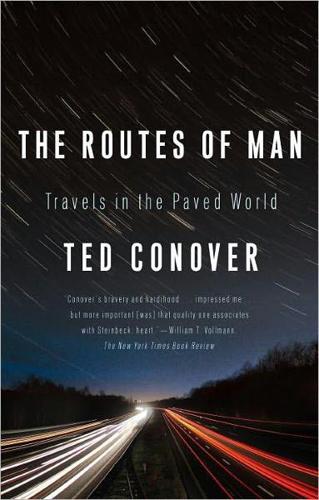
The Routes of Man: How Roads Are Changing the World and the Way We Live Today
by
Ted Conover
Published 15 Jan 2010
Their looting of the Incan empire, their means of extracting its gold, is a tale widely known but one that deserves brief retelling. Using the Inca roads leading to the mountains—these were several, and excellent—the Spaniards invaded Cuzco and later Cajamarca, where they captured the Incan emperor, Atahualpa. Instead of simply killing Atahualpa outright, they ransomed him, holding out the prospect of his eventual release as a means to summon gold and silver from all over the empire. The Incas used the metals not as currency but as decoration for shrines and public buildings. Except for a few decorative pieces to intrigue King Carlos V, Pizarro wanted it all in the form of bullion he could most efficiently export to Spain.
…
These were apparently not for common passage; they crossed lands that had been conquered by the Inca tribe and were a symbol of the Incan state, their use apparently restricted to those on state business. Commonly, local people were forced to do road work as part of the mita system of forced communal labor. One sixteenth-century chronicler described how Emperor Atahualpa and his retinue entered the plaza of the city of Cajamarca: “There were in front of him many Indians who cleaned the road in spite of the fact that it was rather clean and there was nothing to pick up.” Modern Andean scholar John Hyslop has described how in some “Inka centers the entry and exit roads, and other major corridors, were planned divisions that separated groups of people with different status and function”—suggesting that in the Inca empire some must have lived, as we say, on the wrong side of the tracks.
…
Except for a few decorative pieces to intrigue King Carlos V, Pizarro wanted it all in the form of bullion he could most efficiently export to Spain. So the same Inca craftsmen who had worked the metal into fine shapes were now compelled to melt it back down. The object, according to legend, was to fill a room in Cajamarca, where Atahualpa was being held hostage, up to the top, at which point his freedom would be won. The “ransom room” was finally filled but then the emperor, to the Spaniards’ everlasting infamy, was executed by garrote—strangling a person from behind with rope or wire. Thus, the first great export of the New World to the Old was gold—taken by force, at a cost of Incan pride and identity.
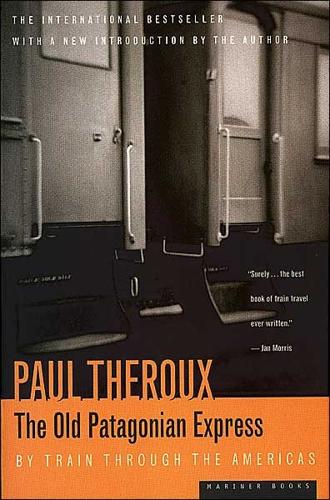
The Old Patagonian Express
by
Paul Theroux
Published 23 Sep 1979
I imagined that such a mural was most effective in persuading Indians to keep the faith. Indians, certainly, comprised the largest number of churchgoers in Quito, and there were Indian - that is, Inca - touches in the artistry of these churches. A quarter of the decoration in the Church of San Francisco was Inca. The church itself was built on the site of Atahuallpa's summer residence; the Inca motifs occur throughout the church - two sun gods carved on gold discs as soon as you enter the door are repeated on the walls of the interior, with fruit and flowers, the Inca harvest symbols decorating saints and crucifixion scenes. The Stations of the Cross are Spanish, the masks fixed to the walls above them are the large gold faces, some with headdresses that one sees in miniature on Inca jewellery - with exaggerated up-turned or down-turned mouths, like masks of comedy and tragedy.
…
It did not impress the Spaniards, it does not impress me even now. I don't know what these people are talking about when they show these pots and masks. Can't they see how crude these things are? The Incas weren't warriors - they didn't fight the Spaniards. They were simply overpowered.' I said that the Spaniards had arrived at a period of civil war. Ata-huallpa had usurped the Inca throne from his brother. The people were fatalistic - they thought the Spaniards had been sent to punish them. It wasn't hard to conquer people who believed they were guilty already. They were a degenerate race,' said Mr Medina. The Incas had a system of social security that was a damn sight better than anything Ecuador has produced.'
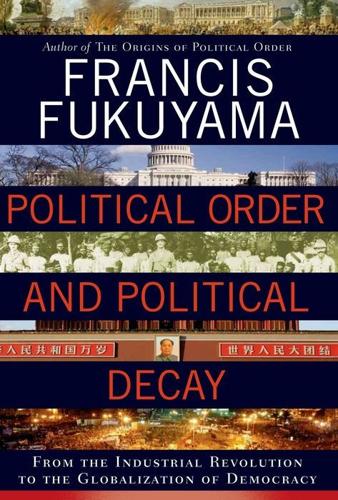
Political Order and Political Decay: From the Industrial Revolution to the Globalization of Democracy
by
Francis Fukuyama
Published 29 Sep 2014
The Spanish located their two viceroyalties in Mexico and Peru precisely because they found precious gold and silver there and because they could draw on dense populations as sources of servile labor. The Spaniards enriched themselves at first by simply plundering the wealth of their conquered kingdoms. (The Inca ruler Atahualpa was told to fill a large room with gold and silver to ransom his life, which he did, whereupon the Spanish killed him anyway.) When these sources were exhausted, they discovered new ones, the silver mines in Zacatecas, Mexico, the mercury mines in Huancavelica, and the silver mountain of Potosí high in the Andes (then part of Upper Peru, now in Bolivia).
…
In contrast to the nomadic tribal societies that existed in North America, or groups like the Mapuches who resisted white settlers in Argentina and Chile, the Aztecs and Incas were organized into complex, state-level societies and projected centralized authority over tremendous distances. And yet the speed and completeness with which their power collapsed—as told by authors from William Prescott to Jared Diamond—is astonishing.9 Francisco Pizarro defeated the Inca king Atahualpa, who commanded an army of perhaps 80,000 soldiers, with 168 Spanish troops of his own, and did not suffer a single casualty. Diamond attributes this success to a number of technological factors, such as the Spanish use of horses, muskets, and steel swords, none of which were possessed by the Incas, as well as a healthy dose of tactical surprise.
…
This made it easy for the conquering Spaniards to find local allies who would fight for liberation from their indigenous rulers. Cortés established alliances with the Tlaxcala and the Totonacs and was able to attack Tenochtitlán with tens of thousands of indigenous soldiers. The same was true of Pizarro in Peru, who arrived on the heels of a bloody conflict between two princes, Atahualpa and Huáscar, over succession to the throne of the Sapa Inca, or supreme chief. As in Mexico, the Spaniards were able to play on Inca divisions. Local allies proved critical in the final defeat of Túpac Amaru, the Inca prince who tried to rally the last organized resistance in the eighteenth century, and who is still a symbol of indigenous pride in contemporary Peru.
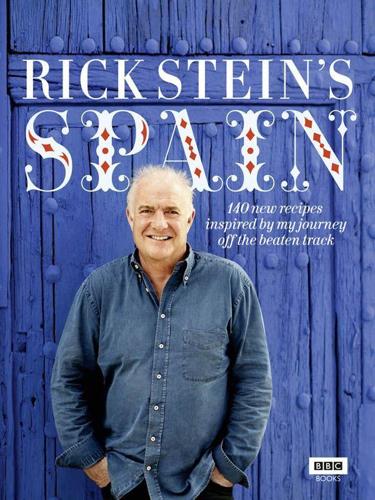
Rick Stein's Spain: 140 New Recipes Inspired by My Journey Off the Beaten Track
by
Rick Stein
Published 15 Dec 2011
You feel that you participate more in enjoying the reality of somewhere that’s not perfect. The Pizarro mansion across the square from the statue is quietly crumbling too; even the friezes on the corner of the ‘House of the Conquistador’ are cracking. The busts of Francisco Pizarro and his wife the princess Inés Yupanqui, sister of the Inca Emperor Atahualpa, look out over a town of towers and turrets. Atahualpa, you may remember, having been capured by Pizarro, offered a large room filled with gold for his freedom. Pizarro took the gold but executed him anyway – by garotte, a kinder way to die than burning at the stake, from which the emperor was spared by having converted to Catholicism.
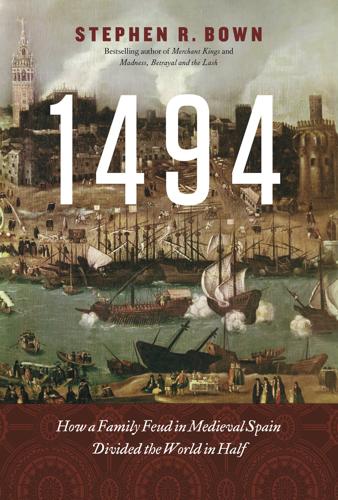
1494: How a Family Feud in Medieval Spain Divided the World in Half
by
Stephen R. Bown
Published 15 Feb 2011
Roving bands of privately funded adventurers scoured the Americas from Florida to Peru, searching for another source of easy treasure. The Mayan city-states in the Yucatán Peninsula and Guatemala were subjugated by Pedro de Alvarado in 1523, and Francisco Pizarro led his band of privateers south to Peru in 1531. By 1533, Pizarro had defeated the Inca Empire and conquered the city of Cuzco by treacherously capturing Emperor Atahualpa. In Florida, Hernando de Soto led an expedition in search of the Fountain of Youth and the Seven Cities of Cibola in 1539. In all these endeavours, the native peoples of the Americas—enslaved, starved, displaced and ravaged by disease—suffered horribly. Many were killed outright, others were compelled to labour, chained in work gangs or bent under the lash in silver mines in Peru and Mexico.
…
Aeterni Regis (bull), 78, 143, 149 Afonso V (king of Portugal): abdication of throne, 54; death, 55; invasion of Castile, 33 –35, 48 –53, 75,76; betrothal to Juana la Beltraneja, 48; plan to marry Isabella, 11–13, 35, 36, 42, 43; sponsor of Atlantic voyages, 48, 73, 74, 75 Albuquerque, Afonso de, 163 Alcazar of Madrid, 12 Alexander VI (pope). See Borgia, Rodrigo (Pope Alexander VI) Alfonso de Coca, friar, 14, 15, 36 Alfonso of Palencia, 47, 50, 53 Almeida, Francisco de, 132 Alonso de Aragon, 52 Alvarado, Pedro, 193 Anghiera, Pietro Martire d’, 129 Arana, Beatriz Enríquez de, 99, 104 Archimedes, 81 Aristotle, 80, 81 Atahualpa, emperor of the Incas, 193 Azores, 77, 78, 87, 96, 97, 98, 121, 122, 128, 148 Aztec Empire, 160, 192, 193, 194, 198 Badajoz Conference, 195–97 Balboa. See Nuñez de Balboa Barbosa, Beatriz, 164 Barbosa, Diego, 164, 173 Barros, João de, 96, 125, 169 Bermuda, 121 Bernáldez, Alonzo, 218 Bernáldez, Lorenzo, 216, 217 Bojador, Cape, 60, 66 –68, 73, 74 Borgia, Alonso, 134 Borgia, Cesare, 137, 138 Borgia, Lucrezia, 137, 146 Borgia, Rodrigo (Pope Alexander VI): appearance, 134, 136, 138; becomes pope, 140 –42; birth and childhood, 134, 135; children, 137, 146; corruption and immorality, 134 – 39; death, 150; early career, 135; personality, 134 –36; relations with Ferdinand and Isabella, 44, 45, 139, 140, 144 –47, 153, 160; support for Jews, 138, 267; Inter Caetera (divides the world), 145, 146, 148, 149, 154, 166, 202, 252, 253, 266, 267 Brazil, 4, 159, 167, 173, 174, 200, 216, 262, 266 Burchard, Johann, 137, Bynkershoek, Cornelius, 260 Cabot, John, 158, 199, 200 Cabot, Sebastian, 195, 199, 200 Cabral, Pedro Álvares, 159 Cadamosto, Alvise, 68 Calixtus III (pope), 74 Canary Islands, 75–78, 87, 97, 98, 103, 111, 114, 129, 145, 149, 154, 173, 217, 247 cannibals, 120, 217, 218 Cão, Diogo, 78, 91, 94 Cape of Good Hope, 62, 159, 241 Carillo de Acuña, Alfonso (archbishop of Toledo), 14, 15, 26, 27, 40, 42 Cartagena, Juan de, 174, 176 Casa de Contratacíon, 164, 171, 203, 204 Castile: civil war, 26 –29, 43; economy, geography and population, 16, 17; Portuguese invasion, 49 –53 Cathay (China), 85, 91 Ceuta, Morocco, 63, 66, 91 Charles I (king of Spain).
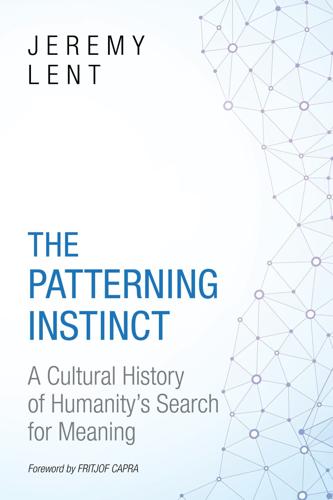
The Patterning Instinct: A Cultural History of Humanity's Search for Meaning
by
Jeremy Lent
Published 22 May 2017
Inspired by Cortés's achievement, Pizarro set out a few years later to emulate his conquest, targeting the Inca Empire of South America. With fewer than two hundred soldiers facing an army of eighty thousand Inca warriors, Pizarro also used the strategy of surprise and betrayal to meet the Inca leader Atahualpa face to face, then began slaughtering Atahualpa's troops while taking him hostage. Within a year, the capital, Cuzco, was conquered, and the Inca Empire was no more.37 In Guns, Germs, and Steel, Jared Diamond cogently analyzes the clash of cultures that led to this one-sided conflict between the Spanish and the empires of the New World.
…
See also Islamic civilization and thought Aral Sea, 391 Aranyakas, 166 Arawak people, 306 Aristotle Chinese thought, contrast with, 209 empiricism of, 152 in “moonlight tradition,” 359–61 Plato, contrast with, 152–53, 159, 359–60 reason, veneration of, 159, 170 soul, view of, 359–60, 368, 525 systematic logic and, 152, 360 systems theory, relation to, 367–68 in Western tradition, 340–41, 347, 360–61, 525 Arthasastra, 305 artificial intelligence, 28, 36, 376, 401, 408 Singularity and, 421–26 Aryans, 133–36, 169 cosmology of, 162–65 invasion of Indian subcontinent, 133–36, 138, 162–65, 173, 483 racial supremacy perceived, 314–15 Ascent of Man, The (Bronowski), 13, 16, 17 ase, 113 Ash'arites, 320–23 Ashoka, King, 247–48, 304–305 Assyrian empire, 217–19, 297–98 astronomy in Chinese civilization, 324 in European thought, 344–49 in Greek civilization, 319–20, 336 in Islamic civilization, 319–20, 321 in Mesopotamian civilization, 128 Atahualpa, 307 Aten, 122–24, 239 Athens, Greece, 143, 337 Atiyah, Sir Michael, 353 atman, 203 Brahman, identity with, 165–66, 168–69, 171, 172–75 in chariot metaphor, 168–70, 190–91 as eternal self, 165–66, 167–69 existing in everything, 172, 176 intellect, distinct from, 170–72, 520 renunciation and, 167–68, 177 Augustine, Saint, 231–33, 236 human being, conception of, 232–33, 236 legacy of, 231–33, 237, 339–40 and Original Sin, 232 Platonism, relation to, 231–32 reason, view of, 245, 339–40 rejection of senses, 232–33 slavery, view of, 300 Avesta, 139 Axial Age, 144 Aztec civilization, 113, 115, 288, 307–308, 472 ba, 113–14 Babylon, 129, 140, 145 cosmology of, 336 in Old Testament, 140, 219–20, 222 Bacon, Francis, 280, 313, 315, 324 and CONQUERING NATURE metaphor, 277–78, 279, 281, 313 Bacon, Roger, 344 Baghdad, Iraq, 318–19 Bantu agricultural expansion, 109 Bateson, Gregory, 260 Baxter, Richard, 312 Bayt al-Hikma (House of Wisdom), 319 Bellarmine, Cardinal, 348–49 Bernays, Edward, 380, 400 Berry, Thomas, 377, 540 Bertalanffy, Ludwig von, 364 Betanzos, Father Domingo de, 311 Bhagavad Gita, 167, 174, 489 Biard, Pierre, 91–92 Bible, 187, 231, 243, 287 interpretations of, 215–16, 341, 347 See also New Testament; Old Testament bidaa, 323 bin Laden, Osama, 247 Blake, William, 361 Blombos Cave, 69–70, 73 Boethius, 340, 342 Bohr, Niels, 258, 270 Book of Changes.
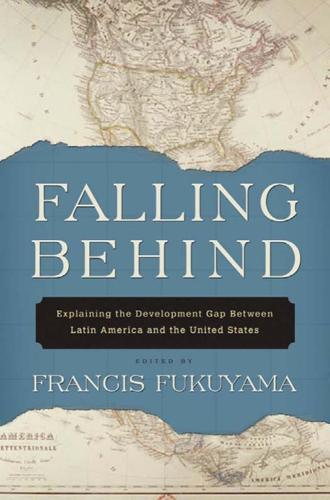
Falling Behind: Explaining the Development Gap Between Latin America and the United States
by
Francis Fukuyama
Published 1 Jan 2006
As they looked for gold, they tried to use the local indigenous population for forced labor and attempted to capture the local Algonquian chief, Powhatan, in the hope that, as with Pizarro’s capture of Atahualpa, the chief would deliver all of the natives and their wealth to the colonists. However, unlike Peru, in Virginia there was no large centralized tributary empire, but rather many competing and fragmented tribes. Moreover, unlike Atahualpa, Powhatan was highly suspicious of the strangers who had arrived on his shores and sensibly refused to go to Jamestown. Furthermore, there was no gold or silver, and the Native Americans, not accustomed to paying tribute or engaging in forced labor, would not work.

The Red Queen: Sex and the Evolution of Human Nature
by
Matt Ridley
Published 14 Aug 1993
It is quite possible, even likely, as the next few chapters will reveal, that some parts of the human body and psyche have been sexually selected. CHAPTER SIX Polygamy and the Nature of Men ‘If women didn’t exist, all the money in the world would have no meaning.’ Aristotle Onassis ‘Power is the ultimate aphrodisiac.’ Henry Kissinger In the ancient empire of the Inca, sex was a heavily regulated industry. The sun-king Atahualpa kept one thousand five hundred women in each of many ‘houses of virgins’ throughout his kingdom. They were selected for their beauty and rarely chosen after the age of eight – to ensure their virginity. But they did not all remain virgins for long: they were the emperor’s concubines. Beneath him, each rank of society afforded a harem of a particular, legal size.
…
That left precious few for the average male Indian whose enforced near-celibacy must have driven him to desperate acts, a fact attested to by the severity of the penalties that would follow any cuckolding of his seniors. If a man violated one of the Inca’s women he, his wife, his children, his relatives, his servants, his fellow villagers and all his llamas would be put to death, the village would be destroyed and the site strewn with stones. As a result, Atahualpa and his nobles had, shall we say, a majority shareholding in the paternity of the next generation. They systematically dispossessed less privileged men of their genetic share of posterity. Inca people were, many of them, the children of powerful men. In the west African kingdom of Dahomey, all women were at the pleasure of the king.
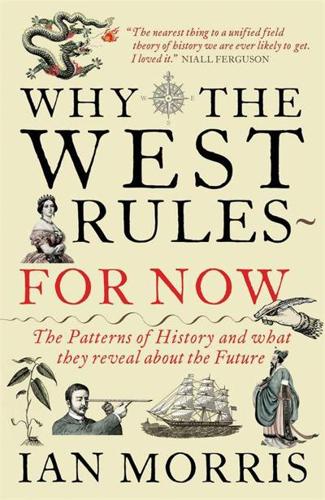
Why the West Rules--For Now: The Patterns of History, and What They Reveal About the Future
by
Ian Morris
Published 11 Oct 2010
Cortés set Spain on this path by sacking Tenochtitlán in 1521, and Francisco Pizarro speeded them further along it. In 1533 he kidnapped the Inca king Atahualpa and as ransom ordered his subjects to stuff a room twenty-two feet long, seventeen feet across, and nine feet high with treasure. Pizarro melted the accumulated artistic triumphs of Andean civilization into ingots—13,420 pounds of gold and 26,000 pounds of silver—and then strangled Atahualpa anyway. The relatively easy pickings ran out by 1535, but dreams of El Dorado, the Golden King of a realm where treasure lay all around, kept the cutthroats coming.
…
(film), 520n Apollo 11, 182 Apollo 11 Cave (Namibia), 77 Apple computers, 542 Aquinas, Thomas, 371 Arabia, 16, 67, 275, 349 Arabs, 349–52, 360, 362, 370, 377, 427, 566 in China, 342, 407n, 478 lands conquered by, 33n, 350, 352–54, 356–57, 365, 367, 445, 563–64 modern, 535, 548 technologies of, 395–96 Arameans, 218, 220 Archaeology (magazine), 125 Arctic Dryas, 92 Argentina, 464 Arikamedu (India), 274, 275 Aristides, 280 Aristotle, 260, 268, 324, 370, 468, 537 Arkwright, Richard, 496 Armenia, 328 Army, U.S., 537, 539, 618 War College, 615 Around the World in Eighty Days (Verne), 507, 511 Arzawa, 198 Ashoka, 263 Ashur-dan II, King, 235–37 Ashurnasirpal II, King, 236–37 Asian Tigers, 543, 546 Asimov, Isaac, 92–93, 577, 580–81, 614 Assad, Lake (Syria), 90, 94, 96, 101 Assassins, 367 Assaye, battle of, 489 Assyria, 219, 239, 243, 249, 262, 276–79, 369, 445, 528, 610 collapse of, 220 Hittites and, 197–99 language of, 138, 214 revival as gangster state of, 235–37 Tigllath-Pileser III’s rule of, 245–48, 303, 316, 335, 567 Astounding Science Fiction (magazine), 93 Atahualpa, King, 460 Atapuerca (Spain), 54–56 Atenism, 261–62 Athens, 240, 241, 250, 256, 260, 268, 296, 524 atomic bomb, see nuclear weapons Attila, 315–16 Auel, Jean, 57, 69 Augustus, Emperor, 283–85, 313, 320 Austen, Jane, 572 Australia, 16, 68, 70, 75, 77, 159, 410, 519, 520, 602 Austria, 446, 448, 526, 528 Avars, 349 Avignon (France), 398, 401 Axial thought, 285, 322 first-wave, 254–56, 259–63, 329, 562, 569 Renaissance compared to, 420, 476 second-wave, 324, 325–27, 330, 351, 353, 463 social development and, 271 Aztecs, 139, 433, 515 Ba’ath Party, 90 Babylon, 138, 197–200, 214, 215, 219–21, 247–51, 278, 349 Back to the Future (film), 572 backwardness, advantages of, 34, 36, 179, 195, 196, 217, 241, 332, 404, 552, 564, 584, 619 for Arab migrants, 351 in China, 207, 264, 334, 562, 585, 587, 615 Habsburgs and, 466 in Japan, 584 for Mongols, 389 for Muslim world, 571 for Macedonians, 268 in Mesopotamia, 499, 561 for Romans, 264 in Soviet Union, 530 in United States, 510 Bacon, Francis, 468–69, 473 Bactria, 271, 292 Baghdad, 357–59, 362, 364, 366, 370, 391, 401 Bai Juyi, 355–56 Balkans, 310, 313–15, 348, 401, 431, 526, 605 “Ballad of East and West, The” (Kipling), 620–21 Baltic region, 112–14, 127–29, 310, 466 Bamboo Annals, 232 Bank of England, 530 Bao Si, 242–43, 355 Barbegal (France), 287 Barker, Graeme, 107 Basiliskos, 316, 317 Battle of the Red Cliffs, The (film), 304 Beijing, 201, 265n, 441, 432, 465, 478, 482, 483, 523, 588–90, 605 Boxer Rebellion in, 211 Britain and, 506, 515, 517, 518 culture in, 436 fall of, 453, 454 Forbidden City in, 205, 528 Gorbachev in, 549 Imperial Academy in, 210 Mongol burning of, 389 Nixon in, 546–47 population of, 152, 482n wages in, 438, 501, 502 Belgium, 160, 446, 510 Belgrade, bombing of Chinese embassy in, 605 Belisarius, 345, 346 Belize, 121 Bell, Alexander Graham, 567 Belloc, Hilaire, 12 Benedict XIII, Pope, 401 Bentley, Edmund, 29 Benz, Karl, 510 Berlin Wall, 550 Bible, 81n New Testament, 14, 255, 325 Old Testament, see Hebrew Bible Bierce, Ambrose, 26 Bin Wong, 18 Birmingham University, 22 Black Death, see bubonic plague Black Hand, 526, 605 Blombos Cave (Africa), 64 Blue Gene supercomputers, 596 Bodhisattvas, 322, 329 Bohemia, 368 Bolivia, 460 Bolsheviks, 528 Bombay–Calcutta railroad, 507 Bonesetter’s Daughter, The (Tan), 51 Boniface VIII, Pope, 398 Boniface IX, Pope, 401 Book of Changes, 479 Book of Lord Shang, 257 Book of Martyrs (Fox), 436 Borneo, 127 Boswell, James, 490–91, 495 Botox, 594 Boulton, Matthew, 491–93, 495–97, 502, 504, 567, 568, 573 Bourbons, 551 Boxer Rebellion, 211, 525 Boyne, battle of, 20 Brain Interface Project, 595 Brando, Marlon, 520n Brazil, 430, 520 Brezhnev, Leonid, 542 Britain, 33, 35, 39–40, 158, 347, 398, 404, 451, 466–70, 472, 521, 525, 534–37, 553, 608, 610, 611, 615 American colonies of, 463–64 China and, 7–15, 25, 40, 143, 145, 147–48, 211, 484, 506, 515–18, 520, 524, 572–73 Christianity in, 353 civil service of, 339n; Civil War in, 452–53 emigration to North America from, 509 Enlightenment thought in, 468–73 exploration and, 416 farming in, 290, 368–69 French wars against, 486–89, 500 Habsburgs and, 461 India and, 7, 273–75, 339n, 495 industrial revolution in, 13, 19–21, 25, 40, 379, 382, 494–98, 500, 501–507, 510–12, 572, 597, 620 Ireland and, 450, 451, 505 medieval, 194 plague in, 397 prehistoric, 80, 189 privateers from, 462–63 Renaissance in, 419 Roman, 274, 290, 307, 311, 314, 320 Royal Navy of, 148, 511, 517 social development of, 147–49, 157, 159–60, 163, 168 trade of, 466–67, 485 Victorian, 136, 506, 513 Vikings in, 371 and World Wars, 528–29 British Broadcasting Company (BBC), 475 British East India Company, 7, 484, 515 bronze, 208–10, 212–14, 221, 231–34, 410 for coins, 251, 377–78 for ritual vessels, 208, 210, 212, 221, 231–33, 243 for tools, 181, 234 for weapons, 128, 181, 191, 200, 208, 234, 396 Brunelleschi, Filippo, 438 bubonic plague (Black Death), 396–401, 420, 437, 505, 520, 574, 603 in Byzantium, 346–48 in China, 355, 397, 401, 405 in Europe, 397–99, 427, 438, 446, 447, 455, 466, 467, 506 in Islamic nations, 397, 398 Buddha, 255, 256, 262, 274, 322, 324, 375–76, 398, 404–405, 440 Buddhism, 255, 256, 263, 351, 357, 393, 395, 420, 437, 525, 563 in Bactria, 271 in China, 321–23, 326, 328–29, 334, 339–42, 375–76, 378, 419, 423–24, 478, 543, 546 Christianity compared with, 324–28 in Japan, 440 Mahayana, 322, 324, 325 Bulgaria, 313 Bulletin of the Atomic Scientists, 608 Bush, George W., 588 Business Week, 553 Byzantine Empire, 317, 343–49, 363, 373, 457, 566, 616 Arabs and, 352, 356–57 religious conflicts in, 352, 361–62 Turkic attacks on, 366, 372, 401, 403 Caboto, Giovanni (John Cabot), 416, 417, 430 Caesar, Julius, 228, 283, 419 Caffa (Crimea), 397 Cairo (Egypt), 359n, 364, 371, 392 Calicut (India), 429, 431 California, University of; Davis, 19 Irvine, 18, 20 Los Angeles, 18n California Institute of Technology, 18n “California School” of history, 19–20 Caligula, Emperor, 307 Calvinism, 448 Cambodia, 360 Cambridge University, 23, 107, 365, 475–76, 581 Cambyses, King, 249 Canada, 601 Candide (Voltaire), 280 Cann, Rebecca, 71 Cao Cao, 303–304 Cao Xueqin, 503 Carlson, Robert, 596n Carlson’s Curve, 596 Carlyle, Thomas, 472 Carpenter’s Gap (Australia), 77 Carthage, 242, 250, 268, 270, 315–17, 345 Casanova, Giovanni Giacomo, 540 Çatalhöyük (Turkey), 100, 102, 105, 123, 124 Catholicism, 20, 362, 372, 398–99, 401, 404, 448, 453, 477–78 Cavalli-Sforza, Luca, 110–12 Çayönü (Turkey), 102–103, 105, 125 Chang, Kwang-chih, 124, 125, 204, 205, 208 Chang’an (China), 153, 289, 293n, 298–99, 305, 306, 321, 337–38, 340, 342, 355, 359, 377 Chariots of the Gods?
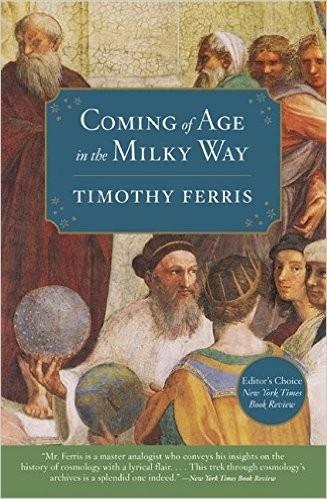
Coming of Age in the Milky Way
by
Timothy Ferris
Published 30 Jun 1988
Gold outweighed the stars in the balance sheets of the exploratory enterprise. Montezuma II, emperor of the Aztecs, sent Cortez a gold disk the size of a cartwheel representing the sun, and another of silver representing the moon; soon he was Cortez’s prisoner, and soon thereafter dead. Atahualpa of Peru sued for his freedom by filling his cell with gold higher than a man could reach, but Pizarra had him strangled nevertheless; he would have burned him had Atahualpa not agreed to accept baptism. The New World’s loss was the Old World’s gain. As the traders and explorers had hoped, Portugal and Spain—and, through Spain, Holland and Britain—prospered at the expense of Africa and America.
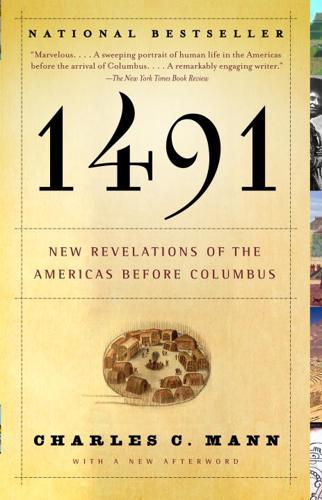
1491
by
Charles C. Mann
Published 8 Aug 2005
“Amerindian Mitochondrial DNAs Have Rare Asian Mutations at High Frequencies, Suggesting They Derived from Four Primary Maternal Lineages.” AJHG 46:613–23. Scott, S., and C. Duncan. 2001. Biology of Plagues: Evidence from Historical Populations. New York: Cambridge University Press. Seed, P. 1991. “‘Failing to Marvel’: Atahualpa’s Encounter with the Word.” Latin American Research Review 26:7–32. Seeman, M. F. 1979. The Hopewell Interaction Sphere: The Evidence for Interregional Trade and Structural Complexity. Indianapolis, IN: Indiana Historical Society. Semple, E. C. 1911. Influences of Geographic Environment on the Basis of Ratzel’s System of Anthropo-Geography.
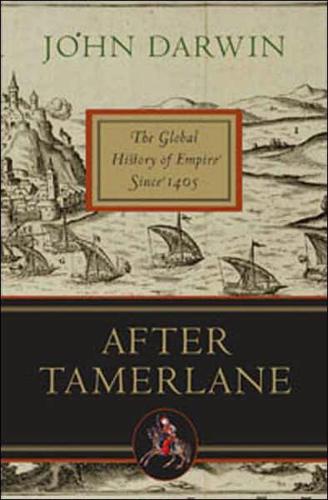
After Tamerlane: The Global History of Empire Since 1405
by
John Darwin
Published 5 Feb 2008
This was how Gaspar Espinosa, Pizarro’s main backer, had made his fortune and become the richest settler in Panama.19 Pizarro, like Cortés, enjoyed the advantage of surprise and had weaponry unknown to his American opponents. Both these factors played a key part in the ruthless coup by which, with almost one blow, the Spanish were able to throw the entire Inca system into political chaos. On 16 November 1532 Pizarro met the Inca ruler at Cajamarca in northern Peru. Atahualpa may have believed that such a small band of strangers could be easily captured by his vast retinue, or that they were mere mercenaries who could be bought off with treasure. He was quite unprepared for the scale of their ambitions. Within hours of his entering the square at Cajamarca, he was a captive of Pizarro, his closest political followers were dead or dying, and some thousands of his army had been cut down by Spanish cavalry.
…
Index Abadan 432, 461 Abbas Shah 80–81 ‘Abd al-Latif, historian 203 Abduh, Muhammad 334 Abyssinia, see Ethiopia Aden 38, 222, 256, 454 al-Afghani, Jamal al-Din 334–5 Afghanistan 153, 258, 292, 478 Afghans 148 Africa 52, 106, 261, 304–18, 310–11, 311–12, 317–18, 463–7 partition of 304–18 Agha Mohammed Shah 214 Agra 144 Ahmad Shah Durrani 151–3, 263 Akbar, Mughal emperor 56, 83–7, 144 Alamein 429 Albuquerque, Afonso 51, 53 Alexander I, tsar 184 Alexander II, tsar 233 Algeria 251, 467 Algiers 257 Alma Ata, Treaty of 479 America 22, 56–65, 97, 98, 106, 107, 163–4, 173, 209, 224, 240–49; see also United States Ankara, Battle of 4 Angola 464 Appalachians 107, 163, 172 Arab League 453 Arabi, Colonel 308–9 Arabs 36, 384–6, 387, 459 Aragon 57 Archinard, Louis 310–11 Argentina 251, 299 Armenians 204, 400 Asian–African Conference (1955) 444 Astrakhan 70, 128 Atahualpa, Inca emperor 61 Atatürk, Kemal (Mustafa Kemal) 386, 389 Atlantic economy 19, 21–2, 245 Aurangzeb, Mughal emperor 146 Australia 174, 224, 254, 255 Azerbaijan 214, 261 Azores 51, 57 Aztecs 57, 59–60 Babis 292 Babur, Timurid prince 82–3 Bacon, Nathaniel 113 Baghdad 74, 385 Bandung, conference 444 Barbados 108 Bayazet I, Ottoman Sultan 4 Beijing, see Peking Belgrade 39, 141 Bengal 148, 176–8, 193, 264 Bentham, Jeremy 210, 230 Bering Strait 106 Bismarck, Otto von 226, 236 Black Death 31, 39 Black Sea 115, 139, 141–2, 163, 175, 225, 292 Blyden, Edward Wilmot 349 Bombay 222, 332 Boxer Rebellion 352 Braddock, General Edward 114 Brazil 54 Britain 167–9, 170, 172, 185, 194–8, 251–2, 262, 323–6, 415–16, 431–2, 436 Bryce, James 303 Byzantine Empire 75–6 Byzantium 28–30 Burma 215, 258, 431, 434 Caesar, Julius 28 Cairo 16, 142, 204, 431, 453 Calcutta 149, 177, 248–9, 265 Calicut 17, 52 California 106, 255 Canary Islands 57 Canton 89, 161, 179, 270 Caribbean, 57–9, 107–8, 197, 320 Caspian Sea 152 Catherine the Great, empress of Russia 171, 180 Catholic Church 63–4, 68, 94, 120 Charlemagne 29 Charles V, Habsburg emperor (Charles I of Spain) 50, 94 Charles XII, King of Sweden 122 Cheng-ho, admiral 44, 88 Chiang Kai-shek 396, 407, 437–8 Ch’ien-lung emperor 128, 199, 201 China 40–45, 87–91, 92–3, 130–32, 193–4, 199–201, 270–76, 349–54, 383, 395–9, 406–8, 411, 419–21, 438–9, 445–7 Ch’ing dynasty, see Manchus Choshu 278–9 Chou En-lai 444, 446 Churchill, Winston 433, 435, 437 Clive, Robert 150, 177–80 coal 191, 195–6 cod fishery 96 Columbus, Christopher 56–7 Confucianism 43, 87, 89–90, 92, 131, 135, 199–201, 354 Congo 310, 312, 314, 316, 466–7 Constant, Benjamin 229–30 Constantinople 73, 142, 372 Cook, James 106, 161, 173–4, 208 Corteés, Hernando 50, 51, 57, 59 cotton 136, 193, 196, 224 Crimea 70, 163, 225 Cuba 57–8, 320, 196 Cultural Revolution 447 Cyprus 30, 285, 461 da Gama, Vasco 17, 52–3 Damascus 35, 39, 385 Danube 28, 39 decolonization 441–3, 464–8 Defoe, Daniel 197 Delhi 266–8 Deshima 92, 134, 278 Dien Bien Phu, Battle of 451 Dutch East India Company 111, 154 dynasticism 94, 113, 116 East India Company (British) 149–50, 177–8, 179–80 Edo 133, 135, 279 Egypt 16, 32, 74, 192, 214, 288–91, 305, 307–10, 345, 383–4, 453–4, 456–9 Elmina 52 Ethiopia 260 Europe: meaning 20–22 thought in 32, 93–4, 99, 117–18, 154, 161, 198–9, 206–10, 229–31, 339–43 Fath Ali Shah 214 Feisal, Arab statesman 384–5 France 112, 114, 166–7, 180–81, 328–9, 463 Frederick the Great, King of Prussia 116, 165, 169–70 Galdan, Kalmyk ruler 127–8 Gandhi, Mahatma 346–7, 391–4, 463 Genghis Khan 4, 36, 66 Genoa 31, 56, 96 Georgia 400 Germany 326–8, 372–3, 417–19 globalization 477–8, 480, 482, 485, 501–5 meaning 8–11 debate 7–8 gold 58–9, 108–9, 255–6 Golden Horde 4–5, 65 Gorbachev, Mikhail 478–9 Great Wall 44, 88 Gujarat 38, 193 Gulistan, Treaty of 222 Habsburg Empire 94, 369, 372 Haidar Ali 178 Haiti 183 Havana 170 Havas 239 Herat 152 Hideyoshi, Japanese ruler 90 Hispaniola 57 Hitler, Adolf 406, 417–19 Ho Chi Minh 451, 474 Hokkaido 216 Hong Kong 249, 444 Hormuz 38, 53 Humboldt, Alexander von 208, 245 Hume, David 207, 246 Ibn Khaldun, historian 4, 35–6, 38 Incas 60–61 India 82–3, 143–51, 163, 177–9, 186, 213, 262–9, 327, 391–4, 412–15, 449–50 Indochina 250, 256, 258, 450–52 Indonesia 138, 258, 434, 436, 450 Iran 79–82, 151–3, 192, 214, 222, 291–3, 361–2, 389–90, 461–3 Iraq 6, 385–6, 454–5 Isfahan 80 Islam 28, 33–9, 137, 138, 199–205, 334–6, 393–4 Ismail Shah 79–80 Israel 432, 459–60 Ivan III, tsar 67 Ivan IV, tsar 68 al-Jabarti, ‘Abd al-Rahman 205 Jamaica 107–8 janissaries 142, 205 Japan 89, 91, 132–5, 215–17, 270–83, 351, 354–9, 381, 396–7, 406–8, 411, 419–21, 447–9 Java 93, 202, 436 Jeddah 38 Jesuits 117, 131, 145, 201 Kabul 82–3 Macao 53, 54 Kandahar 151 K’ang-hsi, Ch’ing emperor 126–30, 131 Kant, Immanuel 210 kaozheng movement 200 Karim Khan Zand 214 Kazan 70–71 Kemal, Mustafa 386, 389 Kennan, George 434 Kenya 466 Kenyatta, Jomo 411 Khartoum 214 Khorasan 151 Khrushchev, Nikita 473–4 Kidd, Benjamin 303 Kiev 66 Kliuchevskii, Vassilii 118, 233 Korea 90, 136, 323, 351, 434, 446, 478 Koxinga (Cheng Ch’eng-kung), freebooter 126–7 Kuomintang (KMT) 395–9, 438–9, 446 Lancashire 244 League of Nations 402–4 Lebanon 285 Lenin, Vladimir Ilich 9, 399–402 Leopold II, king of Belgium 310 Leur, J.
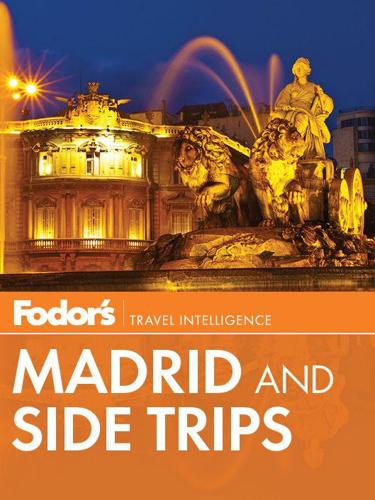
Fodor's Madrid and Side Trips
by
Fodor's
Published 16 May 2011
The palace was commissioned in the early 18th century by the first of Spain’s Bourbon rulers, Felipe V. Outside, you can see the classical French architecture on the graceful Patio de Armas: Felipe was obviously inspired by his childhood days at Versailles with his grandfather Louis XIV. Look for the stone statues of Inca prince Atahualpa and Aztec king Montezuma, perhaps the only tributes in Spain to these pre-Columbian American rulers. Notice how the steep bluff drops west to the Manzanares River—on a clear day, this vantage point commands a view of the mountain passes leading into Madrid from Old Castile; it’s easy to see why the Moors picked this spot for a fortress.
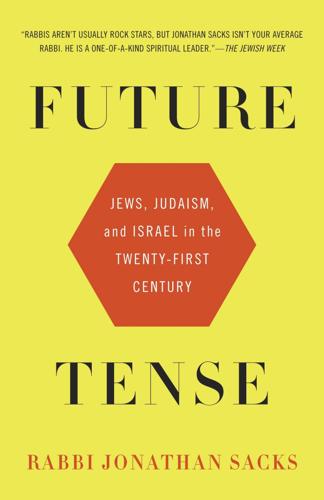
Future Tense: Jews, Judaism, and Israel in the Twenty-First Century
by
Jonathan Sacks
Published 19 Apr 2010
If there were only universals, the world would consist of empires, each claiming the totality of truth and each demonstrating that truth by attempting to conquer or convert everyone else. When, in 1532, Pizarro and his Spanish troops massacred the Incas, seized their land and took their vast treasures of gold, he told Atahualpa, ruler of the Incas: We come to conquer this land … that all may come to a knowledge of God and of his Holy Catholic Faith; and by reason of our good mission, God, the creator of heaven and earth and of all things in them, permits this, in order that you may know him and come out from the bestial and diabolical life that you lead … When you have seen the errors in which you live, you will understand the good that we have done you by coming to your land … Our Lord permitted that your pride should be brought low and that no Indian should be able to offend a Christian.2 If there is only one truth, and you have it, then others do not.
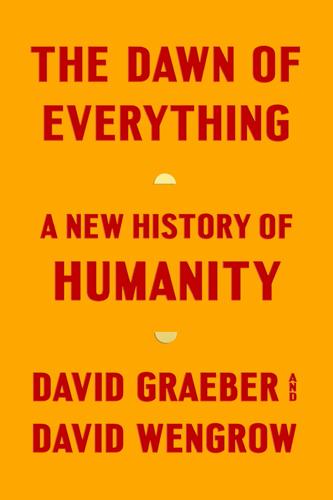
The Dawn of Everything: A New History of Humanity
by
David Graeber
and
David Wengrow
Published 18 Oct 2021
This, as much as the need to carry armies and supplies, required enormous investment in road systems, converting one of the world’s most complex and rugged terrains into a continuous network of well-maintained highways and stepped paths, punctuated by shrines (huacas) and way stations, stocked and staffed from the royal coffers.17 It was on one such annual tour, far from the walls of Cuzco, that the last Sapa Inca, Atahualpa, was abducted by Pizarro’s men and subsequently killed. As with the Aztecs, consolidation of the Inca’s empire seems to have involved a great deal of sexual violence, and resulting changes in gender roles. In this case, what began as a customary system of marriage became a template for class domination.
…
Both were organized around easily identifiable capitals, inhabited by easily identifiable kings who could be captured or killed, and surrounded by peoples who were either long accustomed to obeying orders or, if they had any inclination to shrug off power from the centre, were likely to do so precisely by joining forces with would-be conquistadors. If an empire is based largely on military force, it is relatively easy for a superior force of the same kind to seize control of its territory, since if one takes control of that centre – as Cortés did by laying siege to Tenochtitlan in 1521, or Pizarro by seizing Atahualpa at Cajamarca in 1532 – everything else falls readily into place. There might be stubborn resistance (the siege of Tenochtitlan took over a year of gruelling house-to-house fighting) but, once it was over, the conquerors could take over many of the mechanisms of rule that already existed and start conveying orders to subjects schooled in obedience.
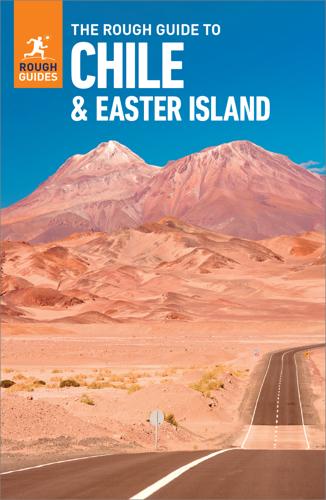
The Rough Guide to Chile & Easter Island (Travel Guide with Free eBook)
by
Rough Guides
Published 15 Mar 2023
Yupanqui and Violeta Parra The roots of nueva canción lie in the work of two key figures, whose music bridged rural and urban life and culture in the 1940s and 1950s: the Argentine Atahualpa Yupanqui (1908–92) and the Chilean Violeta Parra (1917–67). Each had a passionate interest in his or her nation’s rural musical traditions, which had both an Iberian and Native American sensibility. Their work was in some respects paralleled by Cuba’s Carlos Puebla. Atahualpa Yupanqui spent much of his early life travelling around Argentina, collecting popular songs from itinerant payadores (improvising poets, Chile’s Indigenous rappers) and folk singers in rural areas.
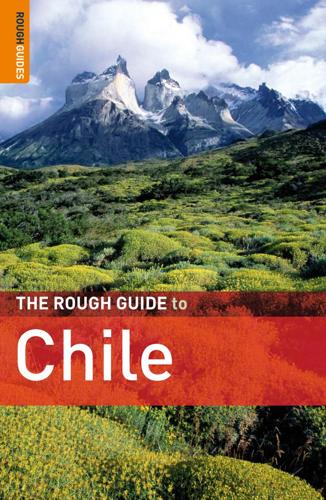
The Rough Guide to Chile
by
Melissa Graham
and
Andrew Benson
Published 11 May 2003
Yupanqui and Violeta Parra CONTEXTS | Chilean music: Nueva Canción 520 The roots of the nueva canción movement lie in the work of two key figures, whose music bridged rural and urban life and culture in the 1940s and 50s: the Argentine Atahualpa Yupanqui (1908–92) and the Chilean Violeta Parra (1917–67). Each had a passionate interest in his or her nation’s rural musical traditions, which had both an Iberian and Amerindian sensibility. Their work was in some respects paralleled by the Cuban Carlos Puebla. Atahualpa Yupanqui spent much of his early life travelling around Argentina, collecting popular songs from itinerant payadores (improvising poets, Chile’s indigenous rappers) and folk singers in rural areas.
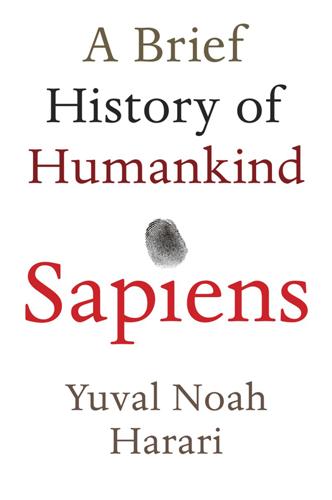
Sapiens: A Brief History of Humankind
by
Yuval Noah Harari
Published 1 Jan 2011
He had far fewer soldiers than Cortés – his expedition numbered just 168 men! Yet Pizarro benefited from all the knowledge and experience gained in previous invasions. The Inca, in contrast, knew nothing about the fate of the Aztecs. Pizarro plagiarised Cortés. He declared himself a peaceful emissary from the king of Spain, invited the Inca ruler, Atahualpa, to a diplomatic interview, and then kidnapped him. Pizarro proceeded to conquer the paralysed empire with the help of local allies. If the subject peoples of the Inca Empire had known the fate of the inhabitants of Mexico, they would not have thrown in their lot with the invaders. But they did not know.
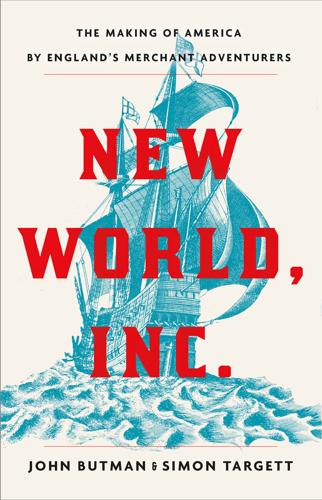
New World, Inc.
by
John Butman
Published 20 Mar 2018
And yet, in the half century after Columbus’s first voyage, Spanish conquistadors had explored the West Indies for precious metals and found enough alluvial gold, first in Hispaniola and then in the surrounding islands, to persuade them to search the mainland. In 1518, Hernán Cortés, who first went to the West Indies in 1504, started to subjugate the Aztec empire in what is now Mexico, pillaging their stores of treasure. Francisco Pizarro pushed southward into the land of the Incas, largely with the goal of finding gold, and after garroting Atahualpa, the Incan emperor, in 1533, claimed sovereignty over that territory for Spain.29 To capitalize on the rich trove of precious metals they found in Mexico and South America, the Spanish established settlements and organized their newly claimed territory into three governmental regions, each ruled by a viceroy.
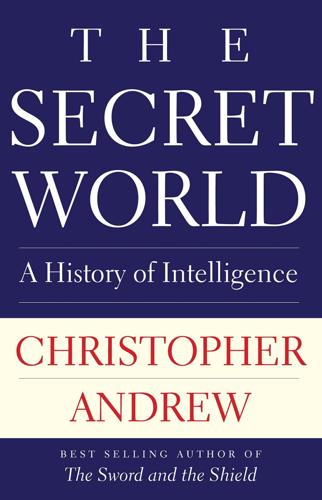
The Secret World: A History of Intelligence
by
Christopher Andrew
Published 27 Jun 2018
Though Inca rulers sometimes sent spies to neighbouring territory they wished to add to their empire, they knew nothing about the Spanish defeat of the Aztecs. Pizarro was thus able to imitate Cortés’s winning strategy – claiming to be a peaceful emissary from the King of Spain and arranging a meeting with the Inca ruler, Atahualpa, at which he kidnapped him. Like Cortés, he then embarked on a war of conquest with local allies hostile to the Incas.67 The illiterate Pizarro, however, lacked Cortés’s flair for intelligence. He and his men, who were obsessed with the hunt for gold, provide extreme examples of the problems of telling truth to power.
…
J., 523 Arco, Antonio de, 200–201, 202–3 Argenson, comte d’, 280 Argentina, 750 Ariovistus (Germanic ruler), 47 Aristander of Telmessus, 35–6 Aristotle, 36–7 Arisue, Major-General Seizo, 664 Arlington, Earl of, Sir Henry Bennet, 234, 236, 237–8 Arlington Hall, Virginia, 643 Arminius (Cheruscan leader), 70–71 Armstrong, Karen, Muhammad: Prophet for Our Time, 3* Arnold, Benedict, 305–6 Arnold, John, 258 Arrian of Nicomedia, 35 Artagnan, Charles d’, 243–4 Arthashastra (Mauryan dynasty manual), 3, 54–5, 55*, 60–66 Arundel, Charles, 183–4 Al-Asbahani, 86† Ascham, Anthony, 221 Ashkenazi, Solomon Nathan, 124 Asim ibn Thabit, 91 Asma bint Marwan, 90 Aspin–Brown Commission (1995–6), 713–14, 716–17, 727 Asquith, Herbert, 6, 458, 474, 475, 477, 494, 499, 510–11, 532, 603, 760 Assange, Julian, 745, 746 assassination anarchist ‘propaganda of the deed’, 429–31, 432–3 in the Arthashastra, 62, 63, 85 of Bogolepov in Russia (1901), 437 of Buckingham, 195, 207 in Chinese tradition, 59, 85 CIA’s plans for Castro, 63, 85, 677, 680, 687, 688 of Concini in Paris (April 1617), 201–2 failures of protective security, 429–31, 433 of Franz Ferdinand in Sarajevo, 444–8, 487 frumentarii in Roman world, 77 of Grand Duke Sergei (1905), 438 by handgun, 169–70 of Henry IV of France, 169, 195 of Sergei Kirov (1 December 1934), 594–5 MGB’s plans for Tito, 85, 681–2 and Muhammad, 89–90 and nineteenth-century police forces, 426–7 Operation FOXLEY (SOE plan to kill Hitler), 338†, 646 pre-First World War ‘golden age of’, 425, 427, 428–31, 432–3, 437–9, 442, 444–8, 487 pursuit of Charles I’s regicides, 219, 221, 230–32, 233–5 Roman plot against Attila, 83–4, 85 royalist plot on Napoleon (May 1803), 337–8 and Rushdie fatwa, 90, 90† in Serbia, 442–3 of Sir William Curzon Wyllie (1909), 619 and Stalin, 62–3, 85, 623–4 Talmud injunction to ‘rise and killfirst’, 732–4 and Tamil Tigers (LTTE), 721 of Trotsky, 62–3, 624 of Tsar Alexander II (March 1881), 154, 425, 427, 437 of Tsar Peter III, 291 as undeclared Israeli state policy, 732–4 of US presidents, 429, 435–6, 688 use of poison, 63 of William I, Prince of Orange (1584), 85, 169–70 Yamamoto’s plane shot down (April 1943), 638 Assaye, Battle of (1803), 345 Aston, Sir George, 13, 452 Astor, Vincent, 605–6 Atahualpa, Inca ruler, 136 Atatürk, Mustafa Kemal, 123 Atta, Mohamed, 724–5 Atterbury, Francis, Bishop of Rochester, 272–5, 279 Attila, Hun leader, 82–5 Attlee, Clement, 673, 678–9, 738 Atwan, Abdel Bari, 704 Augsburg, League of, 247 Augustus, Emperor, 70, 72, 75 Aurelius Victor, 77 Auschwitz II (Birkenau), 656 Australia, 670–71 Austria 1848 disturbances in, 384–5, 388 annexation of by Nazi Germany (1938), 613 ‘black chamber’ (Geheime Kabinets-Kanzlei), 277, 278, 279, 363–4, 365, 369–70, 489 confrontation with Serbia (summer 1914), 487–8, 490–91, 492, 493 and First World War, 486, 502, 523 French decrypts in mid-eighteenth century, 278 and French Revolutionary wars, 317 Galician uprising (1846), 369 intelligence during Congress of Vienna, 363–7 Kaunitz’s intelligence operations, 5, 278–9, 363 Metternich’s repression of students, 372–3 and Napoleonic Wars, 357 Prussian defeat of (1866), 398 Redl as Russian agent, 486 rule in the Balkans, 443, 444, 471 Russian decrypts of despatches, 485, 488, 491, 492 and Seven Years War (1756–63), 278, 287, 288 SIGINT agency in Vienna (pre-First World War), 489, 491 Austrian Succession, War of the, 278, 285–6 authoritarian regimes Aristotle on, 37 Committee of Public Safety in Revolutionary France, 321, 322–3, 325, 326 and conspiracy theories, 106, 326, 594, 598–602, 619–20, 625–6, 651, 680–82, 694–8 counter-subversion campaigns, 4, 26, 100–17, 130†, 574–5, 698–700, 751 crimes against humanity in North Korea, 751–2 as harder intelligence targets than democracies, 693 intelligence analysis as distorted in, 326, 344, 372, 375, 594, 603, 693–8 and media control/censorship, 108–10, 754 mindsets of autocrats, 26, 339, 344, 693, 743, 744, 745 and monopoly of truth, 100, 108–10, 115, 693 see also ‘telling truth to power’ and whistle-blowing, 750–51, 753–4 Ay (Tutankhamun’s vizier), 21 Azev, Evno, 437–9 Aztec Empire, Spanish conquest of, 132–6, 137 Babington, Anthony, 175–9, 188, 192, 200 Bacon, Anthony, 185–6, 188, 189* Baden, Prince Max of, 569 Baden-Powell, Robert, 449–50 Badoer, Angelo, 203 Badoglio, Marshal Pietro, 607 Badr, Battle of (624), 88–9, 91 Baghdad, 97, 98 ‘House of Wisdom’, 4, 98–9, 127, 128 Bagration, Princess Catherine, 366–7 Bahadur Shah (last Mughal ruler), 409–10 Bailly, Charles, 164–5 Baines, Richard, 171–2, 173, 186, 187 Bakatin, Vadim V., 704–5 Baker, James A., 705 Al-Baladhuri (historian), 95 Balaklava, Battle of (25 October 1854), 404 Balasy-Belvata, Jules de, 462–3, 464–5 Baldwin, Stanley, 580, 582, 583 Balfour, Arthur J., 523, 539, 543*, 548 Balkans region, 442–8, 471, 487, 489 Ball, Joseph, 581 balloonists, 411–12 Balta’ah, Hatib ibn Abi, 91 Bancroft, Edward, 296–8, 299–301 Bangya, János, 392–3 Banqueting House, Whitehall Palace, 209, 219 BARBAROSSA, operation (22 June 1941), 326*, 627 Barbès, Armand, 383, 384 Barclay, Sir George, 260 Barclay de Tolly, Mikhail, 352–3, 354–5, 358, 359, 498 Barillon, Paul, marquis de Branges, 248, 249 Barkstead, John, 233 Barnes, Jonathan, 37 Barot, Dhiren, 758 Barr, Joel, 666 Barras, Admiral de, 307 Barrère, Camille, 488 Barry, Madame du, 292 Bastian, Madame Marie-Caudron (‘Auguste’), 459–60 Bates, David Homer, 411 Batiushin, General N.

Werner Herzog - a Guide for the Perplexed: Conversations With Paul Cronin
by
Paul Cronin
Published 4 Aug 2014
Rogers Premiere: June 1981, ARD (German television) 1982 Fitzcarraldo Fiction, 137 minutes, 35mm, colour Director: Werner Herzog Screenplay: Werner Herzog Producers: Lucki Stipetić, Werner Herzog Camera: Thomas Mauch Editor: Beate Mainka-Jellinghaus Sound: Jaurez Dagoberto Costa, Zezé d’Alice Music: Florian Fricke (Popol Vuh), Verdi, Bellini Production Companies: Werner Herzog Filmproduktion, Zweites Deutsches Fernsehen, Filmverlag der Autoren Locations: Iquitos, Río Camisea (Peru), Manaus and Iquito (Brazil) Cast: Klaus Kinski (Brian Sweeney Fitzgerald), Claudia Cardinale (Molly), José Lewgoy (Don Aquilino), Paul Hittscher (Captain), Huerequeque Enrique Bohórquez (Huerequeque) Premiere: March 1982, Munich 1984 Wo die grünen Ameisen träumen (Where the Green Ants Dream) Fiction, 100 minutes, 35mm, colour Director: Werner Herzog Screenplay: Werner Herzog Producer: Lucki Stipetić Camera: Jörg Schmidt-Reitwein Editor: Beate Mainka-Jellinghaus Sound: Claus Langer Music: Fauré, Bloch, Wagner, Klaus-Jochen Wiese, Wandjuk Marika Production Companies: Werner Herzog Filmproduktion, Zweites Deutsches Fernsehen, Filmverlag der Autoren Locations: Melbourne, Coober Pedy (Australia) Cast: Bruce Spence (Hackett), Wandjuk Marika (Miliritbi), Roy Marika (Dayipu), Ray Barrett (Cole), Norman Kaye (Ferguson), Colleen Clifford (Miss Strehlow) Premiere: May 1984, Cannes Film Festival 1984 Ballad of the Little Soldier (Ballade vom kleinen Soldaten) Non-fiction, 45 minutes, 16mm, colour Director: Werner Herzog Producer: Lucki Stipetić Camera: Jorge Vignati Editor: Maximiliane Mainka Sound: Christine Ebenberger Music: Folk songs performed by Isidoro Reyes and Paladino Taylor Production Company: Werner Herzog Filmproduktion (for Süddeutscher Rundfunk) Locations: Nicaragua, Honduras Participants Miskito Indians of Nicaragua Premiere: October 1984, Hof International Film Festival 1984 Gasherbrum – Der leuchtende Berg (The Dark Glow of the Mountains) Non-fiction, 45 minutes, 16mm and Super 8, colour Director: Werner Herzog Producer: Lucki Stipetić Camera: Rainer Klausmann Editor: Maximiliane Mainka Sound: Christine Ebenberger Music: Florian Fricke (Popol Vuh), Renate Knaup, Daniel Fichelscher Production Company: Werner Herzog Filmproduktion (for Süddeutscher Rundfunk) Location: Karakorum, Pakistan Participants: Reinhold Messner, Hans Kammerlander Premiere: June 1985, ARD (German television) 1987 Cobra Verde Fiction, 110 minutes, 35mm, colour Director: Werner Herzog Screenplay: Werner Herzog (from the novel The Viceroy of Ouidah by Bruce Chatwin) Producer: Lucki Stipetić Camera: Viktor Růžička Editor: Maximiliane Mainka, Rainer Standke Sound: Haymo Henry Heyder Music: Florian Fricke (Popol Vuh) Production Companies: Werner Herzog Filmproduktion, Zweites Deutsches Fernsehen Locations: Dahomey (Benin), Elmina, Tamale (Ghana), Cartagena, Cali and Guajira (Colombia), Juazeiro do Norte, Bahia (Brazil) Cast: Klaus Kinski (Francisco Manoel da Silva), King Ampaw (Taparica), José Lewgoy (Don Octavio Coutinho), Salvatore Basile (Captain Fraternidade), Peter Berling (Bernabé), Guillermo Coronel (Euclides), His Royal Highness King Nana Agyefi Kwame II of Nsein (Bossa Ahadee) Premiere: December 1987, Munich 1988 Les Français vus par … les Gauloises Non-fiction, 12 minutes, 16mm, colour Director: Werner Herzog Camera: Jörg Schmidt-Reitwein Editor: Rainer Standke Sound: Bernard Aubouy Production Company: Erato Films Locations: Paris, Toulouse Participants: Claude Josse, Jean Clemente, the rugby team of Stade Toulousain and the Sporting Club of Graulheit 1989 Wodaabe, Die Hirten der Sonne (Wodaabe, Herdsmen of the Sun) Non-fiction, 52 minutes, 16mm, colour Director: Werner Herzog Producer: Patrick Sandrin Camera: Jörg Schmidt-Reitwein Editor: Maximiliane Mainka Sound: Walter Saxer Music: Gounod, Mozart, Handel, Verdi Production Company: Werner Herzog Filmproduktion (for Süddeutscher Rundfunk) Location: Southern Sahara (Republic of Niger) Participants: Members of the Wodaabe Premiere: June 1989, Südwest 3 (German television) 1990 Echos aus einem düsteren Reich (Echoes from a Sombre Empire) Non-fiction, 93 minutes, 16mm, colour Director: Werner Herzog Producer: Werner Herzog Camera: Jörg Schmidt-Reitwein Editor: Rainer Standke Sound: Harald Maury Music: Bartók, Prokofiev, Lutoslawski, Schubert, Shostakovich, Bach, Esther Lamandier Production Companies: Werner Herzog Filmproduktion, SERA Filmproduktion, Films sans Frontières Locations: Central African Republic, France, Venice Participants: Michael Goldsmith, François Gilbault, Augustine Assemat, Francis Szpiner, David Dacko, Marie-Reine Hassen Premiere: November 1990, Paris 1991 Cerro Torre: Schrei aus Stein (Scream of Stone) Fiction, 105 minutes, 35mm, colour Director: Werner Herzog Screenplay: Hans-Ulrich Klenner, Walter Saxer, Robert Geoffrion (from an original idea by Reinhold Messner) Producers: Walter Saxer, Henry Lange, Richard Sadler Camera: Rainer Klausmann Editor: Suzanne Baron, Anne Wagner Sound: Christopher Price Music: Heinrich Schütz, Wagner, Ingram Marshall, Sarah Hopkins, Alan Lamb, Atahualpa Yupanqui Production Companies: Sera Filmproduktions GmbH, Molecule, Les Stock Films International, Zweites Deutsches Fernsehen, Canal+ Locations: Patagonia (Argentina), Munich, Australia, Grenoble (France) Cast: Vittorio Mezzogiorno (Roccia), Stefan Glowacz (Martin), Mathilda May (Katharina), Donald Sutherland (Ivan), Brad Dourif (Fingerless), Al Waxman (Stephen) Premiere: September 1991, Venice Film Festival 1991 Das exzentrische Privattheater des Maharadjah von Udaipur (The Eccentric Private Theatre of the Maharaja of Udaipur) Non-fiction, 85 minutes, 16mm, colour Director: Werner Herzog Producer: Werner Herzog Camera: Rainer Klausmann Editor: Michou Hutter, Ursula Darrer Sound: Herbert Giesser Production Company: Neue Studio Film GmbH (for Zweites Deutsches Fernsehen and Österreichischer Rundfunk) Location: Udaipur (India) Participants: André Heller, Manipuri Jagoi, Deb Des Baul, Pusekhan Hayatm, Huyel Lallong, Devi Bhakta, Pazur, Damodara Marar, M.

Spain
by
Lonely Planet Publications
and
Damien Simonis
Published 14 May 1997
Apparently Rumsey originally sculpted it as a statue of Hernán Cortés to present to Mexico, but Mexico, which takes a dim view of Cortés, declined it, so it was given to Trujillo as Pizarro instead. On the plaza’s south side, carved images of Pizarro and his lover Inés Yupanqui (sister of the Inca emperor Atahualpa) decorate the corner of the 16th-century Palacio de la Conquista. To the right is their daughter Francisca Pizarro Yupanqui with her husband (and uncle), Hernando Pizarro. The mansion was built in the 1560s for Hernando and Francisca after Hernando – the only Pizarro brother not to die a bloody death in Peru – emerged from 20 years in jail for murder.
…
He returned to Spain and, before returning to Panama, visited Trujillo, where he received a hero’s welcome and collected his four half-brothers, as well as other relatives and friends. Their expedition set off from Panama in 1531, with just 180 men and 37 horses, and managed to capture the Inca emperor Atahualpa, despite the emperor having a 30,000-strong army. The Inca empire, with its capital in Cuzco and extending from Colombia to Chile, resisted until 1545, by which time Francisco had died (he is buried in the cathedral of Lima, Peru). About 600 people of Trujillo made their way to the Americas in the 16th century, so it’s no surprise that there are about seven Trujillos in North, Central and South America.